PROGRAM BOOK

BÉLA FLECK’S
RHAPSODY IN BLUE
October 18 & 19
December 13 & 14 25-26
SAINT-SAËNS & SCHUBERT
November 8 & 9
MOZART & GULDA


BÉLA FLECK’S
RHAPSODY IN BLUE
October 18 & 19
December 13 & 14 25-26
SAINT-SAËNS & SCHUBERT
November 8 & 9
MOZART & GULDA
The CORE Group proudly supports ProMusica Chamber Orchestra
Brent G. Coakley, CFP®
Senior Vice President–Wealth Management
Thomas P. Reusser, CFP®
Senior Vice President–Wealth Management
Jason Hull, CFP®, ChFC®
Senior Vice President–Wealth Management
Jessica Penza, CFP® Financial Advisor The CORE Investment Group UBS Financial Services Inc. 5007 Horizons Drive Upper Arlington, OH 43220 614-460-6554
advisors.ubs.com/coregroup
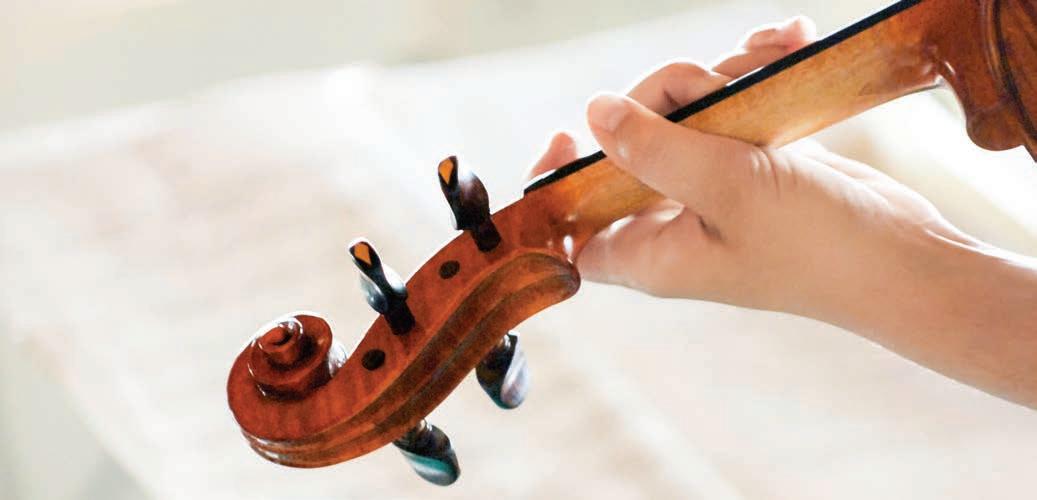
As a firm providing wealth management services to clients, UBS Financial Services Inc. offers investment advisory services in its capacity as an SEC-registered investment adviser and brokerage services in its capacity as an SEC-registered broker-dealer. Investment advisory services and brokerage services are separate and distinct, differ in material ways and are governed by different laws and separate arrangements. It is important that you understand the ways in which we conduct business, and that you carefully read the agreements and disclosures that we provide to you about the products or services we offer. For more information, please review the client relationship summary provided at ubs.com/relationshipsummary, or ask your UBS Financial Advisor for a copy. Certified Financial Planner Board of Standards, Inc. (CFP Board) owns the CFP® certification mark, the Certified finanCial PlannerTM certification mark, and the CFP® certification mark (with plaque design) logo in the United States, which it authorizes use of by individuals who successfully complete CFP Board’s initial and ongoing certification requirements. For designation disclosures, visit ubs.com/us/en/designation-disclosures. © UBS 2024. All





Battenberg & Helen Liebman Chair Chief Executive Officer
Welcome to our 2025-26 season!
This year, we reimagine tradition Starting with GRAMMY-winning banjo virtuoso Béla Fleck performing his arrangement of Gershwin’s Rhapsody in Blue, we will keep you on the edge of your seat throughout the season The orchestra shares the stage for exhilarating performances with acclaimed artists including pianist Terrence Wilson, The Cleveland Orchestra’s principal cellist Mark Kosower, soprano Camilla Tilling, and rising stars violinist Julian Rhee and pianist Janice Carissa both make their return to ProMusica The orchestra will present Mahler’s Symphony No 4, arranged and intimately scored for chamber orchestra We reaffirm our strong commitment to promoting contemporary works with the world premiere of our 73rd commission: “FLOW: Variations Over Time” by our dear friend and composer Paul will also host our popular NAKED CLASSICS, where we delve into the beloved and iconic Appalachian Spring . The season concludes with Music Director David Danzmayr and Creative Partner, renowned violinist Vadim Gluzman reunited on stage for Shostakovich's powerful Violin Concerto No 1 You’ll want to hang on for the wild ride!
This September, ProMusica was announced as the recipient of The 2025 Columbus — presented to a nonprofit organization that has significantly enhanced the quality of life in our community . On behalf of the organization, we are thrilled to share this honor with all of you – our supporters, patrons, Without an audience, there is no music, and we are grateful to The Columbus Foundation for recognizing not only the exceptional standard of playing by our orchestra, but also our commitment to serve our community . We are truly honored by this recognition, and look forward to our continued work to bend and push the boundaries of presenting great music in a great city
Thank you for joining us . It is a privilege to share our music with you, and we are thrilled you’ve chosen to be a part of it tonight

Chief Executive Officer
Janet Chen has led an active and diverse career as a performing musician, arts administrator, and music educator. Born in America and raised in Taiwan, she combines A classically trained flutist, Janet transitioned from performance to arts management, taking on the role as ProMusica’s Operations and Education Manager before becoming its CEO. Under her tenure, ProMusica has doubled its annual operating budget — introducing new artistic programs and outreach collaborations including its free outdoor Summer Music Series concerts; its “Play Us Forward” initiative putting instruments and music instruction into the hands of underserved students; its “Infant and Toddler Program” in partnership with area early childhood learning centers, and the commissioning of new works from America’s living composers with 73 new works created to-date. In close partnership with the ProMusica’s artistic leadership, the orchestra has achieved national and international acclaim as one of the top chamber orchestras of today.
Janet has been recognized for her contributions to the arts, honored by Business First as one of the “Most Admired Executives in Central Ohio” and as a YWCA Woman of Achievement. Most recently, she was a finalist for “CEO of the Year” in the small non-profit category by Columbus CEO. She was selected as a 2021 honoree by the Women for Economic and Leadership Development (WELD). In 2018, she was one of ten members representing Columbus at the Young American Leaders Program at the Harvard Business School. Janet serves on the Boards of CreativeOhio, Experience Columbus, and Pink Ribbon Good, and is a member of the Columbus Cultural Leadership Consortium.
Janet holds a bachelor's degree from the Oberlin Conservatory of Music, and a master's degree in flute performance from the University of Cincinnati College-Conservatory of Music. Prior to joining ProMusica, she was a member of the Taipei Symphony Orchestra in Taipei, Taiwan, and spent two summers as a flute instructor at the Interlochen Center for the Arts in Michigan.
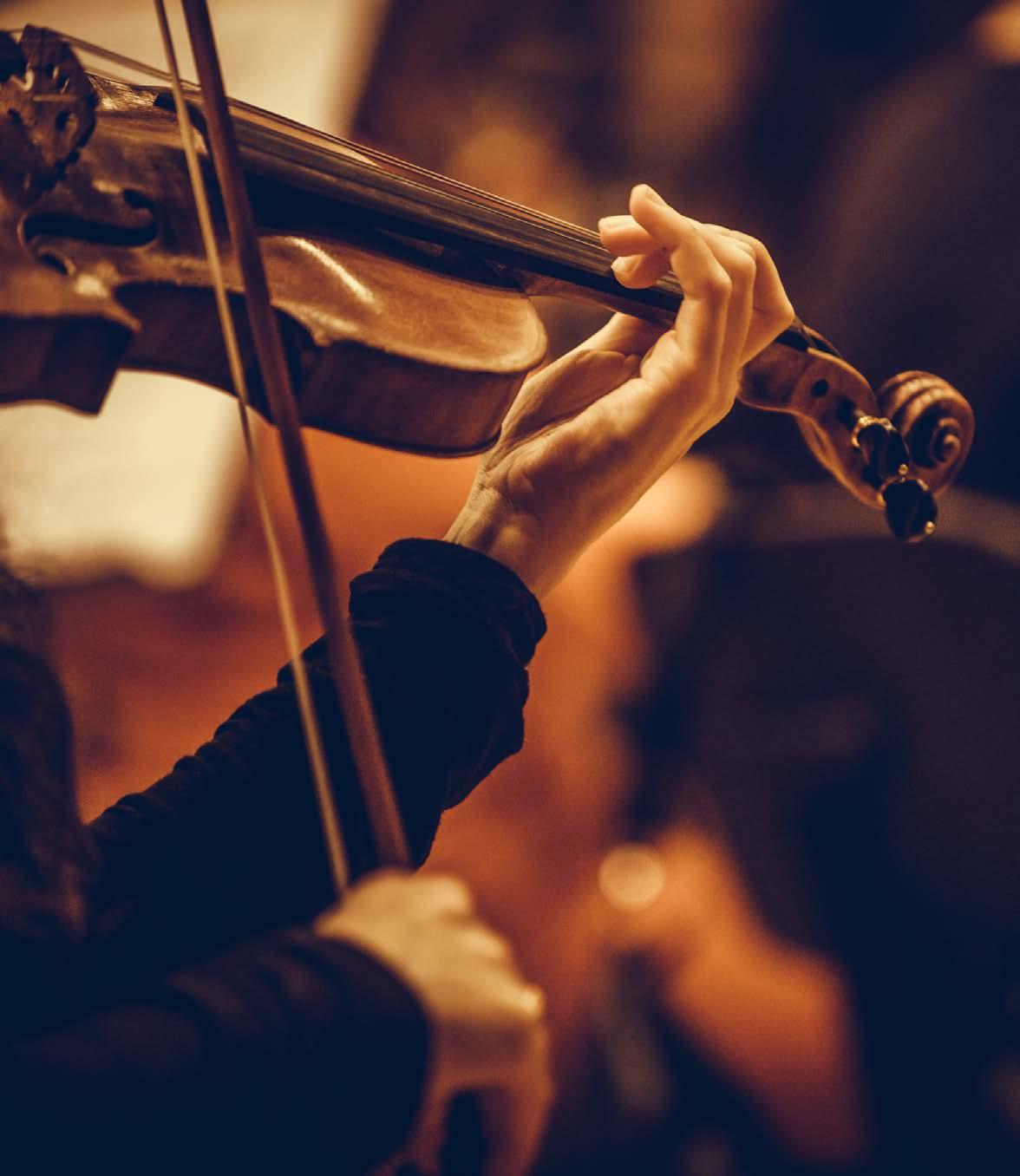
The Wayne P. Lawson, PhD & William Mitchell,
MD Music Director

David Danzmayr is in his fifth season as Music Director of the Oregon Symphony. His 2024/25 season culminated in a performance of Mahler’s Symphony No.3 described by Oregon ArtsWatch as “an emotionally rewarding experience…Led by Danzmayr, the orchestra created the sensation of timelessness, […] taking concertgoers to a heavenly dimension.”
Alongside his position in Oregon, Danzmayr also serves as Music Director of the innovative ProMusica Chamber Orchestra, comprised of musicians from all over the USA who are building exciting projects towards their upcoming 50thanniversary season . He also works regularly with Zagreb Philharmonic Orchestra with whom he previously served as Chief Conductor – highlights of his tenure included several European tours with concerts in Vienna Musikverein as well as Salzburg Festival Hall, where together they performed the prestigious New Year’s concert
As a guest conductor, Danzmayr has worked extensively across North America, and recent and forthcoming engagements include Seattle, St Louis, Atlanta, Vancouver and Dallas symphonies, as well as the orchestras of Detroit, Baltimore, Houston and San Diego
In Europe, relationships include City of Birmingham Symphony Orchestra, Bamberger Symphoniker, Sinfonieorchester Basel, Mozarteum Orchester, Iceland Symphony Orchestra, and he has a regular relationship with Deutsche Kammerphilharmonie Bremen with whom he embarks on a summer festivals tour in 2026 .

Working with soloists at the highest level, Danzmayr has enjoyed collaborations with Yefim Bronfman, Emanuel Ax, Sir Stephen Hough, Renee Fleming and Yo-Yo Ma . The 2025/26 season includes regular partners Joshua Bell, Joyce Yang, Colin Currie and Gil Shaham In the same season, he will make the world premiere of a new jazz piano concerto by David Schiff, commissioned by Oregon Symphony with pianist Darrell Grant .
Danzmayr received his musical training at the University Mozarteum in Salzburg where, after initially studying piano, he went on to study conducting in the class of Dennis Russell Davies and his first post was in Scotland, as Assistant Conductor to the Royal Scottish National Orchestra .
At the beginning of his career, he was awarded prizes at some of the world’s most prestigious conducting competitions including at the International Gustav Mahler Conducting Competition and the International Malko Conducting Competition . In recognition of his success, he has been awarded the Bernhard Paumgartner Medal by the Internationale Stiftung Mozarteum .
Creative Partner & Principal Guest Artist
The Wilson Family Chair
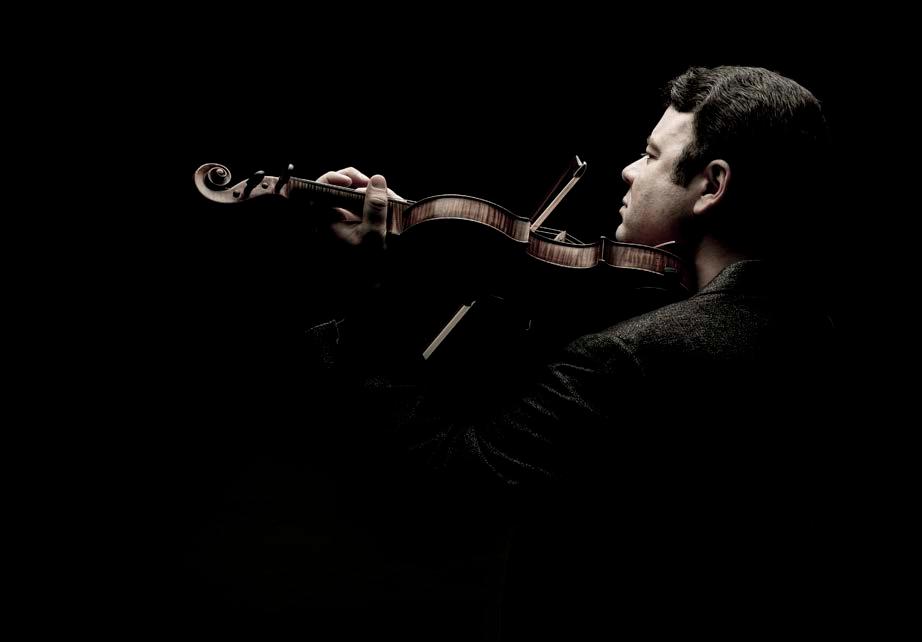
Universally recognized among today’s top performing artists, Vadim Gluzman breathes new life and passion into the golden era of the 19th and 20th centuries’ violin tradition. Gluzman's wide repertoire embraces new music, and his performances are heard around the world through livestreams, broadcasts and a striking catalogue of award-winning recordings on BIS, Platoon and EuroArts labels.
The Israeli violinist appears with world’s leading orchestras and conductors, including Tugan Sokhiev with the Berlin Philharmonic, Boston Symphony, Bavarian Radio Orchestra and Orchestre de Paris; Neeme Järvi with Chicago Symphony and London Philharmonic; Riccardo Chailly with the Royal Concertgebouw Orchestra and the Gewandhaus Orchestra, Santtu-Matias Rouvali with Gothenburg Symphony and Philharmonia Orchestra, as well as with the Cleveland Orchestra under the batons of Hannu Lintu and Michail Jurowski He appears at Ravinia, Tanglewood, BBC Proms, Grant Park and the North Shore Chamber Music Festival, he founded in 2011 .
In the 2025/26 season Vadim Gluzman appears with the Deutsches Symphonie-Orchester Berlin, Israel Philharmonic, Seoul Philharmonic, NDR Elbphilharmonie and the NDR Radio Philharmonie, as well as with the Seattle, Utah and

North Carolina Symphony Orchestras He tours with Gluzman, Moser, Korobeinikov Trio, and continues to lead performances with the ProMusica Chamber Orchestra in Columbus, Ohio, where he serves as Creative Partner & Principal Guest Artist
Mr Gluzman has premiered works by Sofia Gubaidulina, Erkki-Sven Tüür, Moritz Eggert, Giya Kancheli, Elena Firsova, Pēteris Vasks, Michael Daugherty and Lera Auerbach In 2025 he commences his role as Artistic Director of the Music in the Mountains Festival in Durango, Colorado
Accolades for Guzman’s extensive discography include the Diapason d’Or of the Year, Gramophone’s Editor’s Choice, Classica magazine’s Choc de Classica award, and Disc of the Month by The Strad, BBC Music Magazine and ClassicFM
Distinguished Artist in Residence at the Peabody Conservatory, where he teaches a selected group of young violinists, Gluzman performs on the legendary 1690 ‘exLeopold Auer’ Stradivari, on extended loan through the Stradivari Society of Chicago


We are a creative collective of 37 musicians united by our love for music and committed to sharing it with the world. Our concerts honor the classics and champion the contemporary, with 73 commissions to date and a verve for risk taking collaborations. Our music bends the boundaries of imagination, curiosity and discovery.
We are committed to the next generation of music lovers, providing free programs to all ages— empowering young minds and ensuring access. Because music is for all.
Founded in 1979, ProMusica is known for its exceptional artistry, audience intimacy, and community engagement .
Led by Music Director David Danzmayr and Creative Partner, renowned violinist Vadim Gluzman, ProMusica reaches a broad audience across the city—as the resident orchestra at the intimate Southern Theatre in downtown Columbus, at notable venues beyond the city limits, and in non-traditional spaces such as Natalie’s Grandview and The Fives With innovative initiatives such as our
“Composer/Performer Project,” “Naked Classics,” and “Neighborhood Series,” ProMusica aspires to present live music in reimagined and meaningful ways for people to connect and experience with each other .
Committed to sharing a diverse array of musical eras and influences, ProMusica’s performances are time-tested and modern, presented in ways that few orchestras can Dedicated to shaping the future of orchestral music, we are widely recognized as a national leader in promoting contemporary repertoire—with 73 commissions and more than 130 world and regional premieres by composers including Pulitzer Prize winners Kevin Puts and Aaron Jay Kernis, Gabriela Lena Frank, Andy Akiho, Gabriela Montero, Lera Auerbach, Conrad Tao, and Joshua Roman . In addition, ProMusica has an active recording program with 13 CDs released to date This is a testament to the world-class musicians on stage who thrive on artistic exploration and risk-taking—performing with the highest skill, emotion, and humanity for our audiences
In 2017, ProMusica made its Chicago debut performing for a sold-out crowd at the North Shore Chamber Music Festival . Chicago Classical Review noted the ensemble’s “robust unified string timbre [was] most impressive, having an abundant Mozartean grace ” The orchestra has joined forces with crossover artists such as Sutton Foster, Rhiannon Giddens, and Leslie Odom, Jr . In May 2024, the orchestra collaborated with the award-winning artist, composer, multi-instrumentalist, and visionary Jon Batiste for a twoday musical residency, which included the world premiere of his first piano concerto
Beyond the stage, ProMusica is deeply rooted in our city’s cultural fabric, serving approximately 20,000 individuals each season through outreach and education programs, provided at no cost to the participants . Designed to reach people of all ages, our musicians travel to area schools, we invite senior citizens to attend live, working rehearsals, and we put string instruments and musical instruction directly into the hands of middle schoolers
Family-friendly concerts and pre-K Storytimes are presented city-wide, in partnership with the Columbus Metropolitan Library, and our “Play Us Forward” program offers urban charter schools an integrated, in-school music curriculum, inspiring self-confidence, creative expression, and overall academic achievement for each student involved . “Coda: Post-Concert Conversations” gives the opportunity for a direct dialogue between audiences and guest artists—deepening engagement with the music and performers Our annual Summer Music Series welcomes
thousands of guests to Franklin Park Conservatory & Botanical Gardens—free and open to the public, demonstrating our unwavering commitment to provide accessible and transformative performances to all residents in our community . Consistently demonstrating forwardand future-thinking ways to serve Columbus, the orchestra continues to develop new initiatives such as its “Infant and Toddler Program . ” Collaborating with Columbus Early Learning Centers, ProMusica is now playing a role in early childhood development by bringing music to the region’s youngest learners .
ProMusica has won eight ASCAP awards for Adventurous Programming and has received additional honors, including from the Greater Columbus Arts Council and the Columbus Jewish Foundation . In 2015, 2016, and 2018, and 2024, the orchestra was selected as a recipient of The Columbus Performing Arts Prize, designated to celebrate and support
the exceptional artistic directors of Columbus’ performing arts organizations and their aspirations for creative growth . Most recently, ProMusica is honored to be the recipient of The 2025 Columbus Foundation Award, presented to a selected nonprofit organization that demonstrates a strong commitment to making a positive impact .
ProMusica is intimate in size, but we are big in impact . We continue to bring you a truly personal arts experience, one that is full of surprise, delight, and belonging .


To deliver a world-class chamber orchestra experience through innovative programming, audience intimacy, exceptional talent, and artistic excellence.
Latecomers will not be seated until the first convenient pause in the program .
Cell Phones and Signal Watches should be turned off or silenced prior to the performance Cameras and recording devices may not be used in the theatre without prior authorization from ProMusica
Concessions are available inside the front doors to the left .
An ATM machine is located in The Westin Great Southern Columbus hotel lobby, adjacent to the theatre
Restrooms are located at the top of the stairs, men’s on the left and women’s on the right Handicap accessible restrooms are at the back of the main floor seating .
Special Needs Services are available . Please ask an usher for assistance .
Assisted Listening Devices for sound amplification are available upon request at the concession area
ProMusica can provide the following services with a minimum of four weeks notice prior to the concert date:
• Concert guides in Braille or large print, an audio recording in program order, program notes and guest artists biographies
• A sign language interpreter to interpret any vocal music that might be part of the program .
Ticket Exchanges are available to season subscribers Returned tickets qualify as a tax-deductible gift to ProMusica but must be returned by phone, by calling ProMusica at 614 .464 .0066 ext . 101, no later than the Thursday prior to the concert .
Discounted Group Rates are available Call 614 .464 .0066 for pricing and additional information .
Student Tickets are available for $15 through the ProMusica office .
To purchase tickets or for additional information, call 614.464.0066 or visit www.promusicacolumbus.org
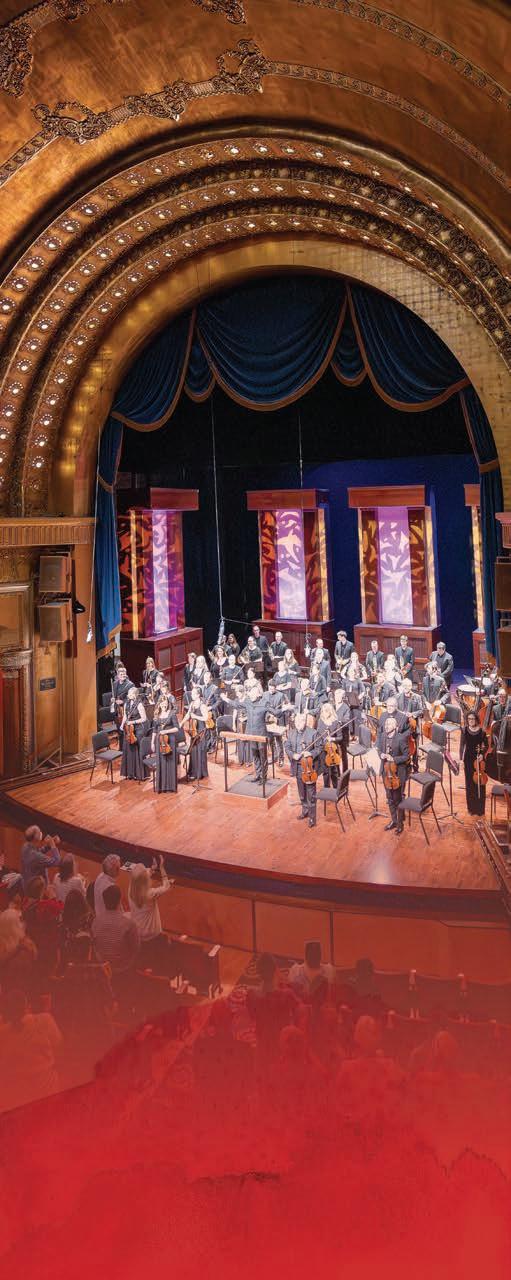
President Lavea Brachman, Brookings Institution
Vice-President Nancy Falk, Civic Leader
Vice-President Joan Herbers, The Ohio State University

Vice-President Christine Kullberg, Cardinal Health
Vice-President Susan Lubow, BakerHostetler
Treasurer Elizabeth Turrell Farrar, Civic Leader
Secretary Elizabeth Moyo, Porter, Wright, Morris & Arthur LLP
Nelson D. Cary, Vorys, Sater, Seymour and Pease LLP
Donna Conaty, ProMusica Musician Representative
Lynn Elliott, Columbus Window Cleaning
William Faust, Ologie
Jake Gibson, Bank of America
Michael Gladman, Jones Day
Kelsey Gregory, PNC Bank
David Hedgecoth, The Ohio State University
Laurie Hill, Civic Leader
+ Stephen Keyes, Abercrombie & Fitch
Eric Kline, ProMusica Musician Representative
Adam Miller, Kegler Brown Hill & Ritter
Samuel H. Porter, III, Ice Miller LLP
Susan Quintenz, Civic Leader
Bob Redfield, Civic Leader
Julie A. Rutter, American Electric Power
+ Peyman Salehi, Fifth Third Bank
Laurie Schmidt-Moats, Park National Bank
Lee Shackelford, Physician
Caitlin Sherman, JewishColumbus
Mark Sholl, Hilliard City Schools
Lydia Smith-Lockwood, Upper Arlington City Schools
+ Todd Swatsler, Partner (retired), Jones Day
+ Executive Committee Member
Marianne Mottley, ProMusica Sustaining Board President
ADMINISTRATION
Janet Chen Chief Executive Officer
The Tom Battenberg & Helen Liebman Chair
David Danzmayr Music Director
The Wayne P. Lawson, PhD & William Mitchell, MD Music Director
Vadim Gluzman Creative Partner & Principal Guest Artist
The Wilson Family Chair
Yvette Boyer Finance Manager
Carolyn Caldwell Grants Consultant
Carlie Geyer Education Manager
Tyler Green Education Programs Intern
Dave Humeston Data Services Manager
Daniel Jacobs Play Us Forward Teaching Artist
Suzanne Jennison Orchestra & Operations Manager
Matthew Kurk Director of Advancement & Engagement
Brittany Lockman Director of Marketing
Lydia Roth Music Librarian
Sarah Short Ticketing & Audience Services Manager
Austin Spillman Operations & Education Assistant
Ashley Zarzabal Administrative Coordinator
TRUSTEES CIRCLE
Artie Isaac, Chair
Deborah Anderson
Tom Battenberg
Milt Baughman
Martin Campbell
Mark Corna
Peter Costanza
Jim Elliott
Beverley Ervine
Jim Ginter
Melissa Ingwersen
Katherine Borst Jones
Suzanne Karpus
Donna Laidlaw
Boyce Lancaster
Mary Lazarus
Peggy Lazarus
Nancy Marzella
Dr . William Mitchell
Kathryn Sullivan
Bernie Yenkin




Barbara
Yvonne Burry
Donna
Michael
Donna
Boyce
Marianne Mottley
Betty Giammar
Claudia
New member
Honorary Members: Mayra Aburto, Patt DeRousie, Judy Pishitelli For noteworthy contributions to the Sustaining Board
A perpetual membership has been established for Jennifer M. Keefer (1969-2003), former Executive Director of the ProMusica Chamber Orchestra


For more than 45 years, ProMusica has enriched our community with its beautiful music, passion for creativity and dedication to education. We are honored to support ProMusica’s work and to play our part in sustaining the arts that bring us all together. bakerlaw.com




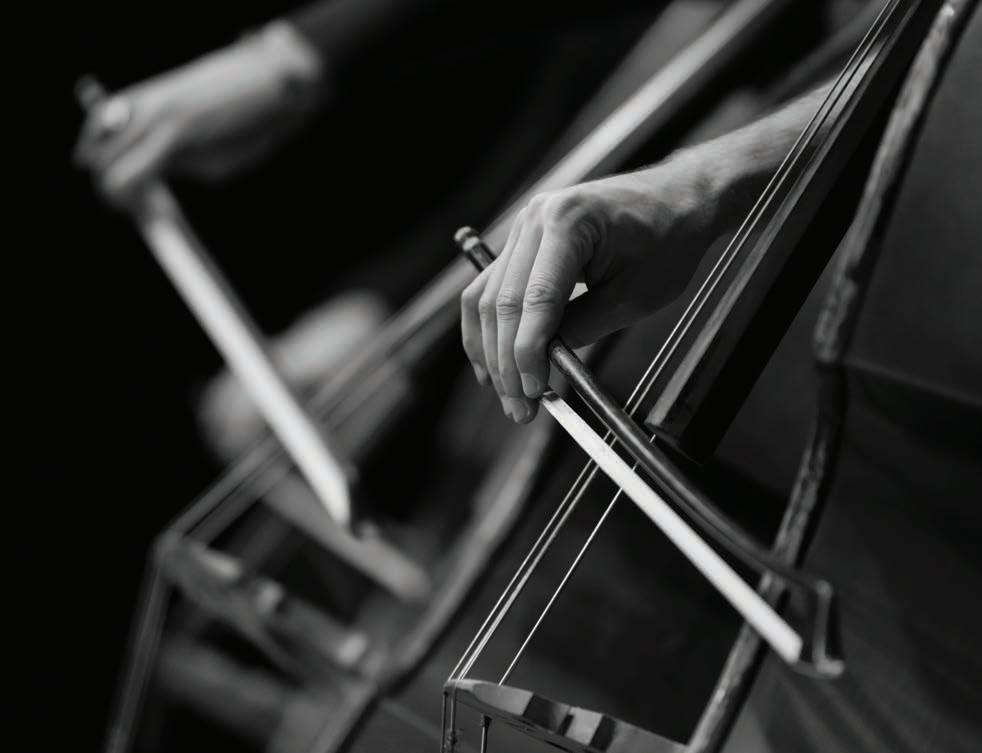
Together, we build communities.
With gratitude to our partner Sam Porter for his board service, Ice Miller is proud to support ProMusica Chamber Orchestra and its commitment to the Columbus community through the power of music. Our law firm supports more than 100 non-profit organizations throughout our region.
350+ lawyers in Columbus and beyond

Just in case you aren't familiar with Béla Fleck, there are many who say he’s the premiere banjo player in the world . Others claim that Fleck has virtually reinvented the image and the sound of the banjo through a remarkable performing and recording career that has taken him all over the musical map and on a range of solo projects and collaborations . If you are familiar with Fleck, you know that he just loves to play the banjo, and put it into unique settings .


A nineteen-time GRAMMY Award winner, Fleck has the virtuosic, jazz-to-classical ingenuity of an iconic instrumentalist and composer with bluegrass roots For over 30 years, he has led Béla Fleck and The Flecktones, the groundbreaking quartet inspired by jazz, funk, bluegrass and beyond From writing three banjo concertos for full symphony orchestra to exploring the banjo’s African roots with the award-winning 2009 documentary Throw Down Your Heart, many tout that Béla Fleck is the world’s premier banjo player As Jon Pareles wrote for The New York Times, “That’s a lot of territory for five strings ”
Collaborators include Abigail Washburn, the Brooklyn Rider String Quartet, Chris Thile, The Blind Boys of Alabama, McCoy Tyner, Zakir Hussain, Edgar Meyer, and Rakesh Chaurasia (their latest album As We Speak won two GRAMMYs in 2024) . Fleck’s album Rhapsody in Blue was released February 12, 2024 on the centennial of the work’s premiere in New York City, and he debuted it at Carnegie Hall with an orchestra in May His GRAMMY-winning project My Bluegrass Heart, is named in honor of his friend and hero Chick Corea (My Spanish Heart) Béla and Chick have toured as a duo and released three acclaimed albums, including their latest and final duo project, Remembrance (2024), which earned a GRAMMY for Best Jazz Instrumental Album


Paul Rissmann is an awardwinning composer, presenter, music educationalist, and host of ProMusica's

He studied composition and classical saxophone at the Royal Academy of Music, Guildhall School of Music and Drama and the Royal Conservatoire of Scotland . He currently holds the positions of Animateur with the London Symphony Orchestra and Children’s Composer in Residence for Music in the Round
Frequently commissioned to transform children’s literature into symphonic scores, Paul won a British Composer’s Award in 2012 and was nominated for an Ivor Novello Composer Award in 2020 . ABC Classics recorded his musical adventure Stan and Mabel, and his setting of Kobi Yamada’s New York Times bestseller What Do You With An Idea? was recently released online . In July 2023, the London Symphony Orchestra released a recording of his concert suites inspired by Alice’s Adventures in Wonderland and Through the Looking-Glass .
Paul’s music has been performed by orchestras all over the world, including by the London Philharmonic Orchestra, New York Philharmonic, Luxembourg Philharmonic, Philharmonia Orchestra, Adelaide Symphony Orchestra, Melbourne Symphony Orchestra, Scottish Chamber Orchestra, Royal Scottish National
Orchestra and Orchestre National du Capitole de Toulouse . Passionate about music education, Paul is equally comfortable making music in a primary school or explaining the intricacies of Stravinsky’s motor rhythms to an audience of adults . His work in this field has received awards from both the Royal Philharmonic Society and the Royal Television Society Paul appeared as creative director in a Channel 4 (UK) documentary Addicts’ Symphony, which explored how music can be therapeutic in overcoming addiction
Paul creates and performs bespoke orchestral events for people of all ages which range from full-scale orchestral concerts for young listeners to a critically acclaimed series of music discovery concerts for adults called Naked Classics . He has guest presented Classics Unwrapped for BBC Radio Scotland, Inside Music for BBC Radio 3 and dissected the world of opera for Glyndebourne in Behind the Curtain.
Paul has appeared with the New York Philharmonic, Vienna Philharmonic, London Symphony Orchestra with Simon Rattle, Esa-Pekka Salonen and the Philharmonia Orchestra, Andris Nelsons and the City of Birmingham Symphony Orchestra and toured India with Nicola Benedetti and BBC Scottish Symphony Orchestra


The Wayne P. Lawson, PhD & William Mitchell, MD Music Director
Katherine McLin, concertmaster
The Michael Jones & Jody Croley
Jones Chair
Rebecca Willie, assistant concertmaster
The Kathryn D. Sullivan Chair
Jennifer Ross, principal second
The Brachman Smith Family Chair
**Amy Cave
The Randy & Marilyn Miller Chair
Kirstin Greenlaw+
Eric Kline
The Jim & Ida Copenhaver Ginter Chair
Solomon Liang
The Laurie & Thomas W. Hill Chair
William Manley
The Fran Luckoff Chair
Victoria Moreira
The Dyann & E. Joel Wesp Chair
Téa Prokes+
The Deborah Raita Chair
Koko Watanabe
The Sallie J. Sherman Chair
VIOLAS
Elias Goldstein, principal
The Amy Thompson & Stephen Fechtor Chair
**Mary Harris
The Margaret & Jerome Cunningham Chair
David Rose+
The Keith F. & Katherine B. Dufrane
Trust Chair
Michael Isaac Strauss
The Anne Powell Riley Chair
VIOLONCELLOS
Marc Moskovitz, principal
The Barbara Trueman Chair
**Joel Becktell
The Donna K. Laidlaw Chair
Nat Chaitkin
The William K. Laidlaw Trust Chair
Cora Kuyvenhoven
The Bob & Mary Frances
Restrepo Chair
John Pellegrino, principal
The John F. Brownley Chair
Boris Astafiev+
Nadine Hur, principal
The Dana Navin Schultz Chair
Anthony Trionfo
The Miriam & Bernard Yenkin Chair
Donna Conaty, principal
The Lee Shackelford Chair
Jessica Smithorn
The Artie & Alisa Isaac Chair
CLARINETS
Ilya Shterenberg, principal
The Beth Grimes-Flood & Tom Flood Chair
Jennifer Magistrelli
The Jack & Betsy Farrar Chair
BASSOONS
Ellen Connors, principal
The ML Chair
Rachael Young
The Carolyn Merry & Bob Redfield Chair
HORNS
Stephanie Blaha, principal
The Todd S. Swatsler Chair
Matthew Oliphant+
The Burkey Family Chair
TRUMPETS
Justin Kohan, principal
The Susan L. Quintenz Chair
Timothy Leasure
The Zunkiewicz Family Chair
TIMPANI & PERCUSSION
Renee Keller, principal
The Susan C. Johnson Chair
Rajesh Prasad
The Bob Redfield & Mary Yerina Chair
HARP
Jeanne Norton, principal
The Sustaining Board Chair
HARPSICHORD
Aya Hamada, principal
The ProMusica Board Chair in memory of Ida Copenhaver
ASSISTING MUSICIANS
Immanuel Davis flute
John Kurakowa clarinet
Evan Lynch clarinet
Sarah Lee bassoon
Brad Granville horn
John Gruber trombone
David Roode trombone
Sebastian Bell bass trombone
Susan Powell percussion
Chad Lilley saxophone
Michael Cox saxophone
James Bunte saxophone
Scott Cuellar
piano
Julian Maddox violin
Patrick Miller viola
Pei-An Chao cello
ORCHESTRA MANAGER
Suzanne Jennison
**Begins the alphabetical listing of string players who participate in a system of rotated seating.
+One year appointment
The Musicians of the ProMusica Chamber Orchestra are members of, and represented by, the Central Ohio Federation of Musicians, Local 103 of the American Federation of Musicians.
Béla Fleck, banjo
Paul Rissmann, composer
David Danzmayr, conductor

Southern Theatre // Saturday, October 18 // 7:00 PM
Southern Theatre // Sunday, October 19 // 7:00 PM
RISSMANN
GERSHWIN (arr. Fleck)
FLOW: Variations Over Time (Commission & World Premiere)
1 . Theme
2 . Variation: Impression, Sunrise
3 . Variation: Vintage Threads
4 . Variation: Expressionism
5 . Variation: Serial Killer

Support for Paul Rissmann’s commission is made possible by an anonymous donor.
The Opening Weekend Champagne Toast is generously provided by:
Stay for Coda: Post-Concert Conversation . Meet the featured artists and learn more about tonight’s program .

Instrumentation: Scored for two flutes (one doubling piccolo), two oboes (one doubling English horn), two clarinets (one doubling bass clarinet), two bassoons, three horns, two trumpets, three trombones, timpani, percussion, harp, piano, and strings
Composed: 2025
Duration: 22 minutes
It started with sushi .
David Danzmayr and Janet Chen pitched an idea over lunch in Downtown Columbus . Their brief was clear, they wanted “something that illustrates compositional techniques that were developed throughout the 20th century ”
I really liked their concept (lunch was great too) so it wasn’t until the next day that panic set in
Three things troubled me:
• many years ago, as a music student, I had vehemently rejected most of these techniques because they felt ugly or limiting, or both
• how could I preserve any sense of self if my job was essentially to dress up in other composers' clothes?
• surely the best way to showcase these innovations would be to play music by the composer who actually pioneered them!
Time passed, anxiety increased, and it took a lot more sushi before the idea of FLOW: Variations Over Time was fully formed
My imposter syndrome was finally tamed by imagining a simple melody that changes style and mood as I embrace a series of new orchestral colours . Of course, none of those colours are new, many are over 100 years old, but they would be new to my palette The challenge was to paint them into my score, but still feel like the music was mine .
FLOW presents a series of variations that take the audience from 1900 to the present day in around 22 minutes . In such a short work, it was impossible to honour all the musical innovations that were developed in that time; however I knew I wanted to start by exploring impressionism and end with something bold and cinematic, which I dubbed ‘Zimmerism’ – as in Hans!
However, the problem with that journey is, it doesn’t truly deliver us into the present, not when we now live in a world dominated by A .I
Like many artists, the thought of humanity happily inviting a computer to make creative decisions on their behalf fills me with horror . Even if the technology surpasses anything the most gifted creatives could imagine, does that mean that people should stop dreaming, stop feeling, stop making art?
It was with a huge amount of trepidation that I uploaded the FLOW theme to A .I One of its compositions is included as part of this concert suite, not out of laziness, but as a representation of the present While the rest of this work took many months to compose, A .I . made hundreds of variations on my theme in a matter of minutes It doesn’t even need an orchestra to play it
Instrumentation: Scored for solo banjo, two flutes, two oboes, three clarinets, two bassoons, three saxophones, three horns, two trumpets, three trombones, timpani, percussion, and strings
Composed: 1924
Duration: 17 minutes
Banjo player extraordinaire, arranger, composer, and musical maverick Béla Fleck probably didn’t need the 100th anniversary of Rhapsody in Blue to inspire his reinterpretations of that classical-jazz masterpiece, but it certainly didn’t hurt . Fleck first heard the iconic work as a seven-year-old when his uncle introduced him to the movie of the same name, which tells the story of George Gershwin . It left an indelible impression on the youngster . Perhaps Fleck saw something of Gershwin in himself, another New York Jew also destined to do great musical things . But above all, there was Gershwin’s brilliant, well-loved score, which so effortlessly imbues a black jazz musical idiom with thrilling, classically inspired piano virtuosity . Decades later, Fleck remains overtly aware of the danger such an undertaking would find today, that is, a white man lifting the music of black culture for his own means . As a banjo player, “everything I do moves within the problematic nature of the harm done along race lines throughout American history ”
A century ago, when Gershwin dashed off the score, which he did within weeks, there was no “woke” culture, no understood laws of musical property . As a composer, Gershwin, the son of Jewish immigrants, had deeply immersed himself in the rich musical mélange of New York from a young age, studying classical piano, working as a song “plugger” for Tin Pan Alley music publishers, and then gradually arranging and composing his songs for vaudeville and Broadway . In 1919, Gershwin scored his first hit with “Swanee,” a song Al Jolson heard him play and went on to sing himself Gershwin was, by this time, so enmeshed in the sounds of vaudeville and jazz that when bandleader Paul Whiteman commissioned a piano work from the young composer, a mash-up of these various styles must have seemed the most natural thing in the world .
Gershwin himself described the Rhapsody’s compositional process as a reimagination of the American melting pot in music:
“It was on the train, with its steely rhythms, its rattle-ty bang, that is so often so stimulating to a composer . . . I frequently hear music in the very heart of the noise And there I suddenly heard—and even saw on paper—the complete construction of the rhapsody, from beginning to end No new themes came to me, but I worked on the thematic material already in my mind and tried to conceive the composition as a whole . I heard it as a sort of musical kaleidoscope of America, of our vast melting pot, of our unduplicated national pep, of our metropolitan madness . ”
The kaleidoscopic nature can also be noted in the work’s segmented architecture . Rather than adhering to classical form or structure, Gershwin’s music unfolds naturally— hence the term Rhapsody, or rhapsodic—as if it’s a large improvisatory piece in the making (Gershwin had yet to write out the entire piano part for the premiere and so improvised the cadenzas) . No less than Leonard Bernstein has commented on the work’s fragmented character or lack of musical “inevitability,” precisely that component that makes Beethoven, Beethoven . “You can cut out parts of it without affecting the whole in any way except to make it shorter You can remove any of these stuck-together sections and the piece still goes on as bravely as before . You can even interchange these sections with one another and no harm done You can make cuts within a section, or add new cadenzas, or play it with any combination of instruments or on the piano alone; it can be a five-minute piece or a six-minute piece or a twelve-minute piece And in fact, all these things are being done to it every day . It's still the Rhapsody in Blue .”
Regardless of the cultural dangers of history, Rhapsody in Blue, alongside Gershwin’s “folk” opera Porgy and Bess,
which has likewise been criticized for its representation and appropriation, remains quintessentially great American art . The music has been embraced universally, Béla Fleck being but one in a long line of interpreters In 2024, in celebration of Rhapsody’s centennial, Fleck reimagined Gershwin’s music several times over, both as a vehicle for bluegrass band and, in a more traditional version, by substituting the banjo for piano within the framework of the well-known orchestral score heard tonight, as arranged by composer Ferde Grofé The cultural twists and turns, however, are never far from Fleck’s mind As he has written,
“America’s music is innovative and full of endless possibilities BECAUSE of the way we are moved by the diversity of thought and culture that we are submerged in We must face harms done, reclaim histories with truer narratives, and adapt our humanity in this moment to create space, opportunity and justice for voices pushed away from the stages, curricula and fame We can do this by elevating composers like Duke Ellington in our curricula, teach African and Latin diasporic pulses in the training of classical music But we still can enjoy Rhapsody as one piece of an illustrious puzzle showing the dawn of a powerful coming together of culture in music ”
Ludwig van Beethoven (1770-1827): Symphony No. 1 in C Major, Op. 21
Instrumentation: Scored for pairs of flutes, oboes, clarinets, bassoons, horns and trumpets, timpani, and strings
Composed: 1795
Duration: 26 minutes
In 1787, Ludwig van Beethoven passed through the gates of Vienna in search of musical guidance He hoped to study with Mozart, but shortly arriving in the musical capital, he learned that his mother was dying, and so quickly returned to his native city of Bonn, Germany Five years later, Beethoven returned to the Austro-Hungarian capital, but as Mozart, too, had since died, the young Beethoven set his sights on learning from the elder Classical statesman, Franz Joseph Haydn Although not the only figure Beethoven would study with in the years that followed, Haydn was certainly the most famous, especially following the latter’s triumphant return from concerts in London in 1790 . Beethoven would butt heads with all his teachers—along with the heads of many other Viennese over the years—and with Haydn things were no different . Years later, Beethoven claimed to have learned nothing from “Papa” Haydn, but we know better . Haydn had recognized the younger man’s talent and did much to foster it . Such influences are peppered throughout Beethoven’s inaugural symphony, drafted between the years 1795-6
Haydn’s musical spirit can be sensed from the first movement’s slow, stately introduction, in the rushing “scherzo” quality of the third, and again in the witty sonata-rondo finale Indeed, when the First Symphony was premiered, in Vienna in 1800 under Beethoven’s direction, one reviewer found it a “caricature of Haydn pushed to absurdity ” It is not known how Beethoven reacted to such criticism, but as someone bent on distancing himself from Haydn while moving the Viennese symphonic tradition forward, we might safely assume Beethoven was not amused .
The First Symphony may not exhibit the revolutionary traits of the “Eroica” or the Fifth, but it nevertheless contains radical ideas of its own, as evident in the work’s opening chord Beethoven not only commences with a dissonance, a rare opening move in 1800, but also opens in a key other than his declared tonality of C major . Is he making a joke at his listeners’—or perhaps his players’—expense, another trait inherited from the humorous Haydn? To be sure, the music soon rights itself, swinging toward F major and foreshadowing the “home” key of C
Another mark of the renegade composer was his approach to orchestration, for rather than simply handing much of the material to the upper strings, as was tradition, Beethoven relied heavily on their colleagues in the woodwind section . He would be taken to task by the critics for his heavy-handed wind writing throughout the First Symphony, but at this stage, Beethoven was intent on exploring new orchestral colors, in addition to exaggerated dynamics and heightened motivic development . Following this unexpected opening gambit, Beethoven begins the inexorable drive toward the Allegro proper, with its greatly anticipated C major resolution If what unfolds from this point on is arguably more routine—a first theme cut from classical cloth, the strongly contrasting subordinate theme, and a development constructed almost entirely from primary material—the underlying power and accompanying drive reveal precisely those qualities that Beethoven would continuously explore and exploit in each symphony that followed .
The courtly atmosphere that opens the second movement may seem reminiscent of the slow movements of Haydn or Mozart, yet Beethoven also offers up clues that he intends to bring increased depth to what was formerly a light-hearted movement . By casting his Andante in a sophisticated sonata form and offering expanded development of his ideas with contrapuntal passagework, a weightiness is achieved in a movement that earlier composers simply looked to as relief from the far more serious strains that preceded it Similarly, while the third movement harbors a conventional Menuetto
label, in reality, it is anything but As suggested by its Allegro molto e vivace tempo indication (“very fast and lively”), this is hardly the aristocratic 3/4-time minuet of Mozart’s day, but rather a movement that rushes relentlessly toward the finale .
Despite the tremendous forward momentum previously established, Beethoven is not yet ready to deliver on his promise . Instead, he opens his finale with an Adagio, and an absurd one at that, built on nothing more than the most basic scale that adds a note with each repetition . Only when the pitch F is reached, demanding immediate resolution, is the music thrust into the Allegro proper, heralded by a flurry of ascending sixteenths that spill into the good-natured opening theme . What follows is a Haydn-esque creation, combining sophisticated wit and a reliance on a hybrid sonata-rondo form, of which Haydn was the undisputed master (even the theme hints at Haydn’s own Symphony No. 88 finale) Haydn’s miraculous powers of invention, however, were simply not to be outdone by the young upstart, at least not yet . We must remember that Beethoven was testing symphonic waters for the first time—the titanic musical waves were still to come . For now, Beethoven played by the master’s rules . Soon enough, the young Beethoven would put the 18th century behind him, shattering old molds and casting new ones with every symphony that followed .
© Marc Moskovitz marcmoskovitz.org
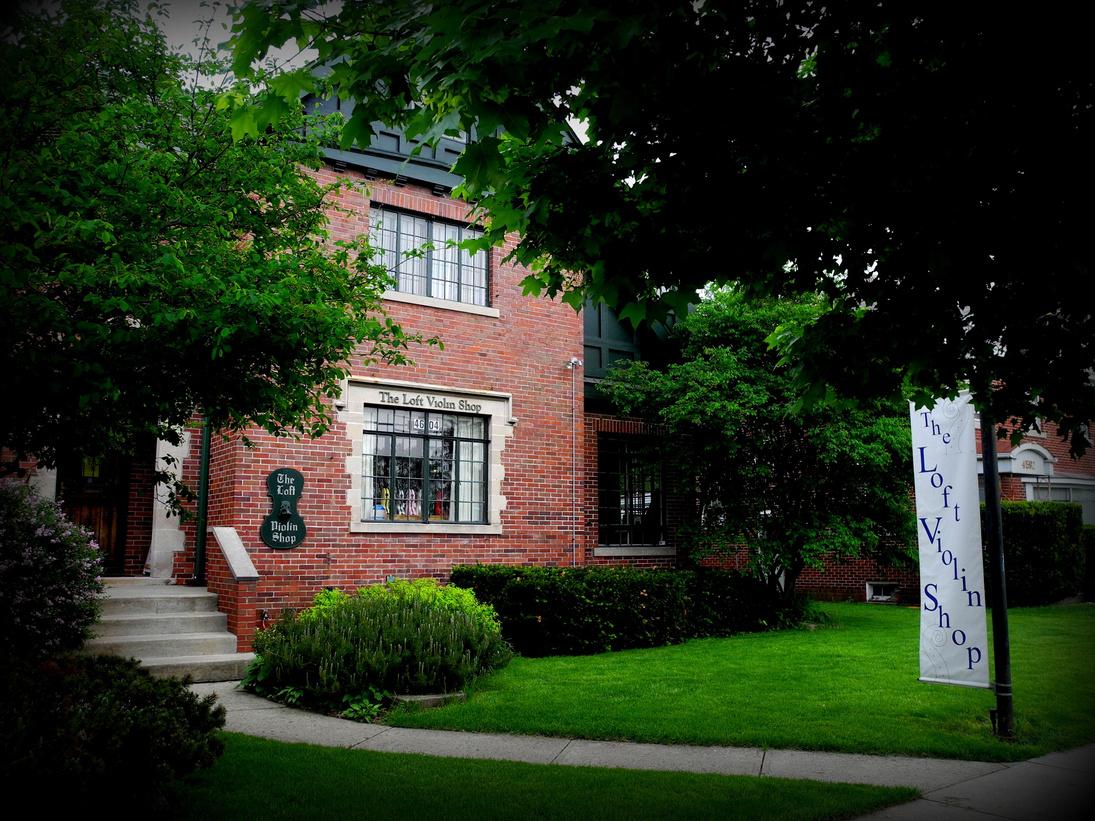



Hilton Columbus Downtown is the largest hotel in Ohio featuring 1,000 rooms across two towers. Our award-winning property offers a total of six food & beverage outlets, including signature live-fire restaurant FYR Short North and Stories on High, a rooftop lounge sitting 28 stories over High Street. Creating a welcoming place to connect and share your stories is at the heart of everything we do, and you are the focus of our generous and Midwest hospitality.


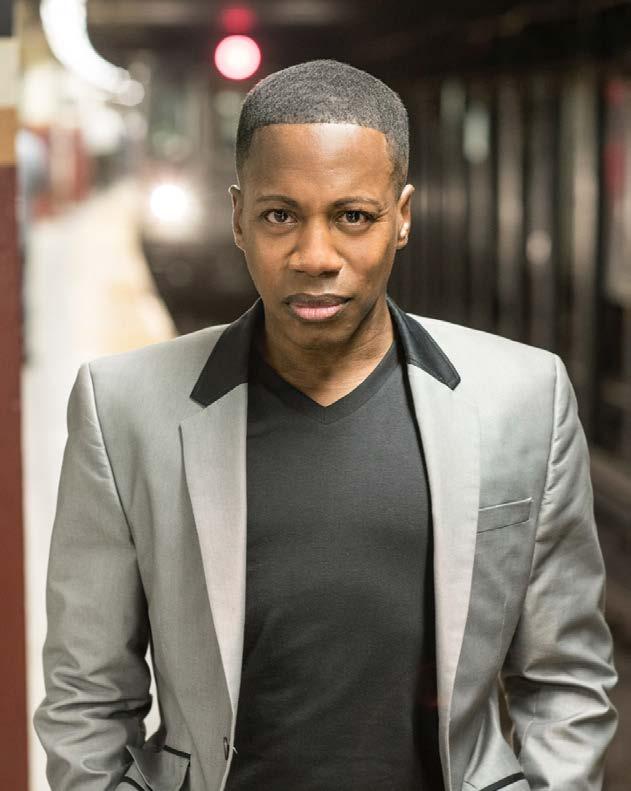
pianistic talents to have emerged in this country in the last 25 years” pianist Terrence Wilson has appeared as soloist with many of the U .S . ’ premiere orchestras including those of Atlanta, Baltimore, Cincinnati, Cleveland, Dallas, Detroit, and Philadelphia, among others, under such conductors such as Christoph Eschenbach, Yuri Temirkanov, and Gunther Herbig, among others .
An active recitalist, Terrence Wilson made his New York City recital debut at the 92nd Street Y, and his Washington, DC recital debut at the Kennedy Center . He has also given recitals at Lincoln Center in NYC, the Ravinia Festival in Chicago, the Caramoor Festival in Katonah, NY, and for the La Jolla Chamber Music Society, among others .
Committed to education, Wilson serves as a member of the piano faculty at the Brevard Music Center Institute and Festival in Brevard, NC . He is also a frequent guest teacher, lecturer and adjudicator in numerous international piano competitions .
Terrence Wilson has received numerous awards and prizes, including the SONY ES Award for Musical Excellence, an Avery Fisher Career Grant, and the Juilliard Petschek Award . In 2011, Wilson was nominated for a Grammy in the category of “Best Instrumental Soloist with an Orchestra”.
Terrence Wilson is a graduate of The Juilliard School, where he studied with Yoheved Kaplinsky . He has also enjoyed the invaluable mentorship of the Romanian pianist and teacher Zitta Zohar . In March 2021, Wilson was appointed to the piano faculty at Bard College Conservatory of Music .

The Wayne P. Lawson, PhD & William Mitchell, MD Music Director
Katherine McLin, concertmaster
The Michael Jones & Jody Croley
Jones Chair
Rebecca Willie, assistant concertmaster
The Kathryn D. Sullivan Chair
Jennifer Ross, principal second
The Brachman Smith Family Chair
**Amy Cave
The Randy & Marilyn Miller Chair
Kirstin Greenlaw+
Eric Kline
The Jim & Ida Copenhaver Ginter Chair
Solomon Liang
The Laurie & Thomas W. Hill Chair
William Manley
The Fran Luckoff Chair
Victoria Moreira
The Dyann & E. Joel Wesp Chair
Téa Prokes+
The Deborah Raita Chair
Koko Watanabe
The Sallie J. Sherman Chair
VIOLAS
Elias Goldstein, principal
The Amy Thompson & Stephen Fechtor Chair
**Mary Harris
The Margaret & Jerome Cunningham Chair
David Rose+
The Keith F. & Katherine B. Dufrane
Trust Chair
Michael Isaac Strauss
The Anne Powell Riley Chair
VIOLONCELLOS
Marc Moskovitz, principal
The Barbara Trueman Chair
**Joel Becktell
The Donna K. Laidlaw Chair
Nat Chaitkin
The William K. Laidlaw Trust Chair
Cora Kuyvenhoven
The Bob & Mary Frances
Restrepo Chair
John Pellegrino, principal
The John F. Brownley Chair
Boris Astafiev+
Nadine Hur, principal
The Dana Navin Schultz Chair
Anthony Trionfo
The Miriam & Bernard Yenkin Chair
OBOES
Donna Conaty, principal
The Lee Shackelford Chair
Jessica Smithorn
The Artie & Alisa Isaac Chair
CLARINETS
Ilya Shterenberg, principal
The Beth Grimes-Flood & Tom Flood Chair
Jennifer Magistrelli
The Jack & Betsy Farrar Chair
BASSOONS
Ellen Connors, principal
The ML Chair
Rachael Young
The Carolyn Merry & Bob Redfield Chair
HORNS
Stephanie Blaha, principal
The Todd S. Swatsler Chair
Matthew Oliphant+
The Burkey Family Chair
TRUMPETS
Justin Kohan, principal
The Susan L. Quintenz Chair
Timothy Leasure
The Zunkiewicz Family Chair
TIMPANI & PERCUSSION
Renee Keller, principal
The Susan C. Johnson Chair
Rajesh Prasad
The Bob Redfield & Mary Yerina Chair
HARP
Jeanne Norton, principal
The Sustaining Board Chair
Aya Hamada, principal
The ProMusica Board Chair in memory of Ida Copenhaver
ASSISTING MUSICIANS
Immanuel Davis flute
John Kurakowa clarinet
Galina Kiep bassoon
Stephen Laifer horn
Brendon Phelps cello
ORCHESTRA MANAGER
Suzanne Jennison
**Begins the alphabetical listing of string players who participate in a system of rotated seating.
+One year appointment
The Musicians of the ProMusica Chamber Orchestra are members of, and represented by, the Central Ohio Federation of Musicians, Local 103 of the American Federation of Musicians.
Terrence Wilson, piano
David Danzmayr, conductor

Southern Theatre // Saturday, November 8 // 7:00 PM
Southern Theatre // Sunday, November 9 // 7:00 PM
FRANK Elegía Andina
SAINT-SAËNS
Piano Concerto No. 2 in G minor, Op. 22
I . Andante sostenuto
SCHUBERT
Intermission
Intermission lasts 15 minutes

ymphony No. 4 in C minor, D. 417 “Tragic” Allegro
Stay for Coda: Post-Concert Conversation . Meet the featured artists and learn more about tonight’s program .

Gabriela Lena Frank (b. 1972): Elegía Andina
Instrumentation: Scored for pairs of flutes, oboes, clarinets, bassoons, trumpets, and horns, timpani, percussion, and strings
Composed: 2000
Duration: 13 minutes
Gabriela Lena Frank perfectly embodies what it means to be a successful composer of mixed heritage in America Of Chinese-Peruvian-Spanish descent, her life growing up was “filled with Chinese stir-fry cuisine, Andean nursery songs, and frequent visits from our New York-bred Jewish cousins,” flavors that went on to influence much of what she has written Frank has also expertly navigated her way through a crowded and challenging contemporary music market The winner of numerous prizes, including a Guggenheim Fellowship and a Latin GRAMMY, Frank has been awarded commissions by, served residencies with, and performed alongside many of the foremost orchestral institutions in the U S She has also collaborated with the Kronos Quartet, Lincoln Center and Yo-Yo Ma’s Silk Road Ensemble, with which she is a member .
Frank has described her Elegía Andina (Andean Elegy) as “one of my first written-down compositions to explore what it means to be of several ethnic persuasions, of several minds . It uses stylistic elements of Peruvian arca/ira zampoña panpipes (double-row panpipes, each row with its own tuning) to paint an elegiac picture of my questions The flute part [heard as an extended flute duo approximately 2/3 through the composition] was particularly conceived with this in mind, but was also inspired by the technical and musical mastery of Floyd Hebert, principal flutist of the Albany Symphony Orchestra . ”
The music opens mysteriously and cinematically, building quickly in volume and intensity . Technically, Frank relies on small, repetitive fragments as anchors for larger blocks of sound, effectively engaging the entire orchestra .
Comprised of two outer orchestral sections bookending the unaccompanied flute duet, Elegía Andina illustrates Frank’s flair for crafting musical kaleidoscopes of color and rhythm
Concerto No. 2 in G minor
Instrumentation: Scored for pairs of flutes, oboes, clarinets, bassoons, horns, trumpets, timpani, strings, and solo piano
Composed: 1868
Duration: 26 minutes
Described by music critic Harold Schoenberg as “the most remarkable child prodigy in history, and that includes Mozart,” Saint-Saëns displayed perfect pitch and began picking out tunes on the piano at the age of three . He would go on to live another eighty-three years, a gift he used to his advantage . By the time he died at age 86, Saint-Saëns had amassed a portfolio of over 300 works, many of which quickly took their place in the standard repertoire, including thirteen operas (among them Samson and Delila), symphonies (including the Organ Symphony), and symphonic poems (Dance macabre), chamber music, his famous Carnival of the Animals, vocal, choral and keyboard works, concerti and so on .
The life of Saint-Saëns was one of paradoxes . Though he possessed a keyboard technique that could easily have launched a career as a piano virtuoso—he made his piano debut at the age of ten, performing concertos by Mozart and Beethoven—he followed a rather conventional path, serving for twenty years as organist of La Madeleine, the official church of the French Empire . Thereafter, he pursued a career as a highly sought-after composer and composition teacher . He admired the progressive music of Richard Wagner and Hungarianborn Franz Liszt but found little to like in the music of his French Impressionist colleagues About Debussy, SaintSaëns quipped, “We must at all costs bar the door of the Institut against a man capable of such atrocities,” and Darius Milhaud’s polytonality prompted the response, “Fortunately, there are still lunatic asylums in France ” He thought Stravinsky insane And despite living well into the 20th century, Saint-Saëns remained musically tethered to the 19th, even if he occasionally sought to explore music’s formal outlines (evident in this evening’s concerto)
Saint-Saëns may have lacked that divine spark granted Mozart or Schubert, but nevertheless produced brilliant, impressively crafted music by relying on sweeping melodies, expert pacing, and, when necessary, dramatic power His Second Piano Concerto is a perfect example of everything Saint-Saëns brought to the table Rather than beginning with a fast movement, the score opens Andante sostenuto (Moderate and sustained), with a Bach-inspired fantasia When the orchestra finally enters, it does so with a broad theme borrowed from one of his composition students, Gabriel Faurè But the piano maintains its hold on the limelight and indeed closes the movement with another extended solo cadenza .
The clever Allegro scherzando is characterized by two ideas, both derived from the material of the first movement—that heard at the start of the playful opening, featuring dazzling pianistic scales and cascades, and a broad theme offered up by the strings and set to a droll piano accompaniment . Rather than truly developing these ideas, Saint-Saëns plays them off against each other by relying on the colors of the orchestra, creating a brilliant backdrop to the virtuoso keyboard . The dramatic character of the Presto finale is established in the pianist’s triplet opening notes, serving as the basis for the relentless propulsion of this tarantella, a frenetic Italian dance beloved by the Romantics Though again drawing on the concerto’s basic material, it is so transformed as to be all but unrecognizable .
Ultimately, it is the captivating keyboard writing that holds our attention . Indeed, it was so demanding that even Saint-Saëns is said to have struggled with portions . Owing to the circumstances of the work’s composition, he had but three weeks to compose the concerto and learn the piano part, which he played for the premiere . Predictably, things did not go particularly well, and Saint-Saëns later confessed that he had played poorly But, as with so much of the composer’s music, its attractiveness and rock-solid craftsmanship all but guaranteed it a place in the repertoire and it has proven a favorite of pianists and audiences alike ever since
Franz Schubert (1797-1828): Symphony No. 4 in C minor, D. 417, “Tragic”
Instrumentation: Scored for pairs of flutes, oboes, clarinets, bassoons, trumpets, four horns, timpani, and strings
Composed: 1816
Duration: 20 minutes
“Who can do anything after Beethoven?” Schubert asked in utter hopelessness, reflecting the uphill battle composers faced in turn-of-the-century Vienna Never mind how Beethoven must have felt following in the musical footsteps of Mozart and Haydn . To be taken seriously as a composer, one needed to reinvent what music could do while working within a framework that listeners could understand and appreciate . Beethoven had several advantages not inherited by Schubert: he was stubborn and self-assured, a formidable pianist, and lived to be fifty-seven, albeit his health and hearing often made life miserable . Schubert, who would only live to see his thirty-first year, was…a violist (insert viola joke here!) . He played piano as well, though was no virtuoso . Still, Schubert had something that few composers of any age possessed—natural genius . Melodies poured out of him unceasingly from an early age, and he quickly learned how best to bottle such lyricism . For Schubert, it was simply a matter of getting the tunes out quickly enough . In a lifetime half as long as it should have been, Schubert produced twice as much as most others .
Schubert was but nineteen when he set to work on what would become the fourth of his nine symphonies . His incorporation of four horns suggests he, like Beethoven, was looking to expand the size of the orchestra, but posterity offers no additional clues about why the work was composed . We know only that the first public performance of the “Tragic” took place in Leipzig in 1849, more than two decades following the composer’s death A lthough Schubert attached the label “Tragic” to his latest offering, its darker moments are arguably more dramatic than tragic, perhaps reflecting Schubert’s attempt to infuse the score with Sturm und Drang, the characteristics of “storm and stress” as practiced by an earlier generation of composers We must also keep in mind that at the time of the
symphony’s composition, the composer was still a young man and perhaps given to a bit of pretention Thus, despite the occasional dark cloud, much of the symphony’s mood is enchanting and cheerful
The slow introduction opens with a single fortissimo C spread across the entire orchestra, a bold, dramatic, even Beethovenian gambit proclaiming neither major nor minor tonality . The scoring invites mystery and perhaps suggests that Schubert’s harmonies can—and often do—turn on a dime . The violins next introduce a dark phrase characterized by leaps and half-step dissonances—intervals crafted for their torturous effect
But Schubert soon resolves matters on a G-flat Major chord, underscoring two critical elements of the symphony as a whole: he plans to traverse unexpected harmonic terrain (G-flat Major is quite removed from the symphony's overall key of C minor), and that tragedy ultimately will not carry the day .
The introduction complete, Schubert returns to the dramatic realm of C minor at the start of the Allegro vivace. He now presents several thematic ideas closely associated with the introduction’s opening violin melody, including a running group of eighth notes and an accented falling gesture that immediately follows, the latter characterized by the quick turn at its outset . A secondary idea, a tight, rocking gesture, is introduced after seventy bars, again by the violins . Listen as the music swiftly tours the tonal worlds of D-flat, E-flat, F, and A-flat . At the outset of the development section—signaled by a brief caesura— Schubert completely clouds the tonality, then winds through still more keys—B-flat minor, G-flat, and finally C-flat Rather than return to the “proper” key of C minor, Schubert now recapitulates the opening material in G minor, before launching into an extended coda in the sunny key of C Major! Schubert has demonstrated a stunning command of harmony, but where, exactly, is the tragedy?
The charming Andante illustrates the lyrical gifts that so effortlessly sprang from Schubert’s pen Note the two sharply defined characters: a gentle A-flat Major theme marked dolce (sweetly), clearly derived from the opening Allegro, and an agitated F minor section which repeatedly draws on the falling motive from the movement’s opening violin theme . Despite the composer’s obsessive reliance on the latter, his rich wind coloration keeps this otherwise
simple movement lively The intensely chromatic motive heard at the outset of the third movement Menuetto plays with a constantly shifting bar line, much as Beethoven had done Though set in 3/4 time, Schubert often stresses the third beat of the bar, creating a confusing sense of a meter . Thus, between the weakened harmonic gravity and the displaced bar line, this dance is kept entirely off balance . The contrasting Trio temporarily sets things right, as winds, then strings, vie for the lyrical ländler melody . This 3/4 dance, associated with German and Austrian peasant life, was a favorite of the composer It featured a downbeat hop, which Schubert emphasizes by a noticeable avoidance of a third beat accompaniment
The finale, marked simply Allegro, again conjures up the agitated world of C minor . A rising bassoon arpeggio launches the impassioned violin melody, set atop a driving string accompaniment, whose fourth-beat accents add extra intensity . But the tempestuous mood will not persist . Already with his second statement, Schubert swings to the major mode . Almost jokingly, strings and winds begin tossing around a two-note figure and then a quick four-note fragment from the opening idea that Schubert drives higher and higher . A silent bar announces the repeat of this sonata form’s exposition and likewise, the start of the development, wherein Schubert presents an uncomplicated review of his material . If the starts and stops suggest the humorous world of Haydn, the tonal excursions remain vintage Schubert . A bassoon arpeggio announces the recapitulation before swinging toward the joyous key of C Major that closed the first movement It is Schubert’s final coup, confirming once and for all that his “Tragic” Symphony is anything but!
© Marc Moskovitz marcmoskovitz.org



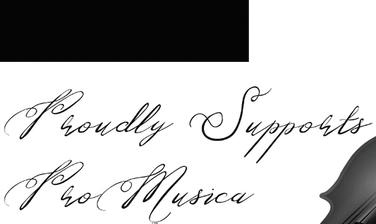

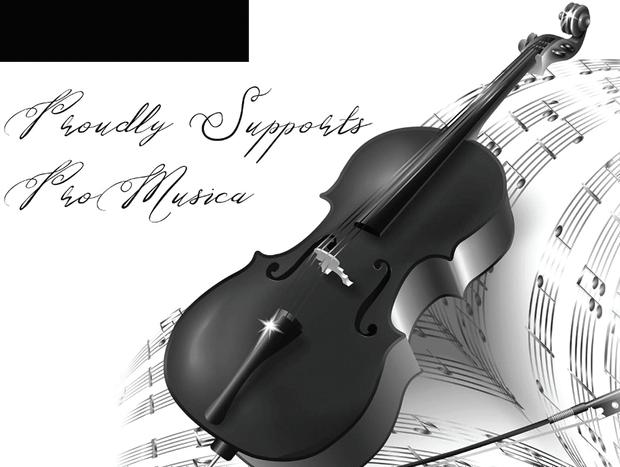






A modern player with a “signature sound” and distinctive style of playing, cellist Mark Kosower embodies the concept of the complete musician performing as concerto soloist with symphony orchestras, in solo recitals, and as a much admired and sought-after chamber musician He is Principal Cello of The Cleveland Orchestra and a scholar and teacher of cello Mark’s performance repertoire and discography are testaments to a deep devotion, not only to frequently heard repertoire such as Tchaikovsky’s Rococo Variations and concertos of Haydn, Walton, Elgar and Dvořák but, significantly, to less well-known concertos of Alberto Ginastera, Miklos Rozsa, Frederich Gulda, and Victor Herbert Mr Kosower has recorded for the Ambitus, Delos, Naxos International and VAI labels, including as the first cellist to record the complete music for solo cello of Alberto Ginastera (Naxos) . He was described as a “powerful advocate of Ginastera’s art” by MusicWeb International, and Strings Magazine noted of his Hungarian music album (also with Naxos) that “the music allows Kosower to showcase his stunning virtuosity, passionate intensity, and elegant phrasing ”
In recent seasons Mr . Kosower has been guest soloist with the Buffalo Philharmonic, the Canton Symphony, the Columbus Symphony, ProMusica Chamber Orchestra, the Hawaii Symphony, the Dayton Philharmonic, the Indianapolis Symphony, the Naples Philharmonic, the Phoenix Symphony, and the Toledo Symphony among others in addition to twentytwo concerto appearances with The Cleveland Orchestra . He has performed as soloist with Herbert Blomstedt, Sir Andrew Davis, Christoph Eschenbach, and Franz Welser-Möst
In 2017 Mark Kosower launched Bach for Humanity, an initiative that aims to bring people together though Bach’s music in presentations for diverse socioeconomic groups in churches, community organizations, educational institutions, homeless shelters, performing arts series, radio and television stations, and retirement communities For three years Mr Kosower performed the complete cello suites and his own transcriptions of the violin sonatas and partitas for cello to widespread acclaim in both conventional and nonconventional venues such as the Cleveland Cello Society, the Cleveland School of the Arts, Judson Manor, and the Cosgrove Center for the homeless . During the Coronavirus pandemic Mark Kosower performed two livestream performances of the Bach Cello Suites from Trinity Cathedral in Cleveland to raise money for Covid-19 victims and as part of Bach for Humanity. Other activities during the pandemic included live and recorded chamber music performances for the North Shore Chamber Music Festival’s Onstage/Offstage series and for the Seattle Chamber Music Society in addition to other recordings and numerous social media projects

Mark Kosower has appeared internationally as soloist with the Rotterdam Philharmonic, the Orchestre de Paris, the Hong Kong Philharmonic, the China National Symphony Orchestra in Beijing, the National Symphony Orchestra of Taiwan, the Brazilian Symphony Orchestra, and the Venezuelan Symphony Orchestra among others In the United States he has appeared with the symphony orchestras of Detroit, Florida, Grand Rapids, Houston, Milwaukee, Minnesota, North Carolina, Oregon, Seattle, Virginia, the Ravinia Festival and St Paul chamber orchestras, and has given recitals at The Kennedy Center, the Philadelphia Chamber Music Society, the National Gallery of Art, and on the Great Performer’s Series at Lincoln Center Mark Kosower is a frequent guest at international chamber music festivals including the Santa Fe, North Shore, and Colorado College of Music chamber music festivals and has appeared at the Aspen, Eastern, and Pacific Music (of Japan) festivals among many others . His chamber music appearances have included performances with Yefim Bronfman, James Ehnes, Leon Fleisher, Vadim Gluzman, Robert Mann, Janos Starker, Schmuel Ashkenasi, and the Juilliard String Quartet .
Formerly Solo Cellist of the Bamberg Symphony in Germany, Mr Kosower teaches a series of master classes at Hidden Valley Music Seminars in Carmel Valley each summer and is on the faculty at Carnegie Hall’s NYO-USA program and the Colorado College of Music Summer Music Festival He has also worked with students in lessons and master classes around the world including the New World Symphony fellows, the Shanghai Orchestra Academy, and the Baccareli Institute of São Paulo and has been on the faculties at the Cleveland Institute of Music and the San Francisco Conservatory .

The Wayne P. Lawson, PhD & William Mitchell, MD Music Director
Katherine McLin, concertmaster
The Michael Jones & Jody Croley
Jones Chair
Rebecca Willie, assistant concertmaster
The Kathryn D. Sullivan Chair
Jennifer Ross, principal second
The Brachman Smith Family Chair
**Amy Cave
The Randy & Marilyn Miller Chair
Kirstin Greenlaw+
Eric Kline
The Jim & Ida Copenhaver Ginter Chair
Solomon Liang
The Laurie & Thomas W. Hill Chair
William Manley
The Fran Luckoff Chair
Victoria Moreira
The Dyann & E. Joel Wesp Chair
Téa Prokes+
The Deborah Raita Chair
Koko Watanabe
The Sallie J. Sherman Chair
VIOLAS
Elias Goldstein, principal
The Amy Thompson & Stephen Fechtor Chair
**Mary Harris
The Margaret & Jerome Cunningham Chair
David Rose+
The Keith F. & Katherine B. Dufrane
Trust Chair
Michael Isaac Strauss
The Anne Powell Riley Chair
VIOLONCELLOS
Marc Moskovitz, principal
The Barbara Trueman Chair
**Joel Becktell
The Donna K. Laidlaw Chair
Nat Chaitkin
The William K. Laidlaw Trust Chair
Cora Kuyvenhoven
The Bob & Mary Frances
Restrepo Chair
John Pellegrino, principal
The John F. Brownley Chair
Boris Astafiev+
Nadine Hur, principal
The Dana Navin Schultz Chair
Anthony Trionfo
The Miriam & Bernard Yenkin Chair
OBOES
Donna Conaty, principal
The Lee Shackelford Chair
Jessica Smithorn
The Artie & Alisa Isaac Chair
CLARINETS
Ilya Shterenberg, principal
The Beth Grimes-Flood & Tom Flood Chair
Jennifer Magistrelli
The Jack & Betsy Farrar Chair
BASSOONS
Ellen Connors, principal
The ML Chair
Rachael Young
The Carolyn Merry & Bob Redfield Chair
HORNS
Stephanie Blaha, principal
The Todd S. Swatsler Chair
Matthew Oliphant+
The Burkey Family Chair
TRUMPETS
Justin Kohan, principal
The Susan L. Quintenz Chair
Timothy Leasure
The Zunkiewicz Family Chair
TIMPANI & PERCUSSION
Renee Keller, principal
The Susan C. Johnson Chair
Rajesh Prasad
The Bob Redfield & Mary Yerina Chair
HARP
Jeanne Norton, principal
The Sustaining Board Chair
HARPSICHORD
Aya Hamada, principal
The ProMusica Board Chair in memory of Ida Copenhaver
ASSISTING MUSICIANS
Julia Paine bassoon
Andrew Jeng trumpet
Christopher Blaha tuba
Julie Licata percussion
Antoine Fatout drumset
Stan Smith
acoustic guitar
Ryan Behan celesta
ORCHESTRA MANAGER
Suzanne Jennison
**Begins the alphabetical listing of string players who participate in a system of rotated seating.
+One year appointment
The Musicians of the ProMusica Chamber Orchestra are members of, and represented by, the Central Ohio Federation of Musicians, Local 103 of the American Federation of Musicians.
Mark Kosower, cello
David Danzmayr, conductor
Southern Theatre // Saturday, December 13 // 7:00 PM
Southern Theatre // Sunday, December 14 // 7:00 PM

STILL
GULDA
MOZART
The American Scene: Suite No. 1 “The East”
I . On the Village Green (Graceful dancers)
II . Berkshire Night (Tranquility)
III . Manhattan Skyline (New York, the gracious city)
Concerto for Cello and Wind Orchestra
I . Ouverture
II . Idyll
III . Cadenza
IV Menuett
V . Finale Alla Marcia
Mark Kosower, cello
Intermission
Intermission lasts 15 minutes
Symphony No. 22 in C Major, K. 162
I Allegro assai
II . Andante grazioso
III . Presto assai
MOZART Symphony No. 35 in D Major, K. 385 “Haffner”
I Allegro con spirito
II . Andante
III . Menuetto & Trio
IV . Presto
Stay for Coda: Post-Concert Conversation Meet the featured artists and learn more about tonight’s program .

William Grant Still (1895-1978): The American Scene: Suite No. 1 “The East”
Instrumentation: Scored for pairs of flutes, oboes, clarinets and bassoons, horns and trumpets, trombone, tuba, timpani, percussion, harp, celesta, and strings
Composed: 1957
Duration: 11 minutes
A student at the Oberlin Conservatory of Music who assisted the janitor to help make ends meet, Mississippiborn William Grant Still later joined the navy before moving to Harlem, where he played with and arranged music for dance bands . Still caught his first musical break with his “Afro-American” Symphony No . 1, debuted by the Rochester Philharmonic in 1931 and subsequently performed in New York, Chicago, Los Angeles, Berlin, Paris, and London . And by the time he received the commission for what became The American Scene, Still had composed music for the New York World’s Fair (1939) and the New York City Opera, led the Los Angeles Philharmonic in his music, and had made soundtrack arrangements for major studio films (Pennies from Heaven, Stormy Weather) .
Consisting of five individual suites—The East, The South, The Old West, The Far West, and finally, A Mountain, a Memorial, and a Song—Still’s The American Scene was his grand attempt at capturing the essence of America in sound Each suite is comprised of three movements, and “The East,” performed this evening, lasts about ten minutes
I On the Village Green: This lush opening movement evokes an earlier, simpler time Crafting an idyllic landscape, Still separates the winds and strings in this lilting 3/4 time dance II . Berkshire Night: A laid-back, nocturnal movement which, despite its geographical setting in the American highlands, nevertheless displays echoes of Still’s Afro-American blues roots .
III Manhattan Skyline: Despite its title, the final movement of Still’s suite captures the downto-earth New York of George Gershwin, whether the Ford Model A’s honking down Broadway, glitzy flappers, or the frenetic, flashy, and never-ceasing nightlife of Times Square
Instrumentation: Scored for solo cello, flute, two oboes, two clarinets, bassoon, two horns, two trumpets, trombone, tuba, drum set, acoustic guitar, and bass
Composed: 1980
Duration: 30 minutes
If the name Friedrich Gulda remains relatively unknown on this side of the Atlantic, it is largely a consequence of geography and no reflection on his talent or ability . Indeed, the late Austrian pianist and composer was among the most talented of his generation, if also one of the most unorthodox . In 1999, for example, he announced his death in the press to mark a forthcoming performance as a resurrection party . Gulda’s formal piano studies commenced at age 7 . He went on to win the Geneva International Music Competition at age 16, and his early professional years were marked by noted piano performances of the music of Bach, Mozart, and Beethoven . But Gulda maintained a strong interest in jazz, as much for its rhythmic and improvisatory freedom as for the escape it offered him from the academic approach of his schooling By the 1950s jazz had become a major factor in his playing and musical thought, leading to concerts at Birdland in New York and the Newport Jazz Festival, performances aside jazz giants Chick Corea and Herbie Hancock, and compositions inspired by works as diverse as “Round Midnight,” Miles Davis’ “Put Your Foot Out,” and the Doors’ “Light My Fire ”
The Cello Concerto, which dates from 1980, is unlike anything else in the repertoire G ulda’s inspiration ranges from the jazz club and beer hall to the out-of-doors He rejects the typical string section in favor of a modest-sized wind band and drum set . And instead of the traditional three movements normally associated with the concerto, Gulda constructed a symmetrical, five-movement arch,
with a cadenza at the center On either side, Gulda places dance movements, bookended in turn by the high-spirited outer movements The cello writing, while challenging, is ideally suited to the instrument, whose range and lyrical qualities are wonderfully exploited Throughout, Gulda weaves a wealth of ideas that are distinctive, clever, alluring, and wholly unique
The Overture is framed by a bold opening theme heralded by the cello alone, an easily recognizable motto that returns at pivotal moments to set off the contrasting, lyrical secondary theme and signal the movement’s exposition, development, and recapitulation . While a reflection of Gulda’s classical pedigree, it is nevertheless deftly absorbed into a movement otherwise dominated by the 12-bar blues progression launched on the heels of the cellist’s opening bars .
There follows a pastoral Idyll, an exquisite musical poem whose mood is established at the outset by the horns . The middle section is characterized by a rustic Ländler, a 3/4-time dance associated with Austrian peasant life that Gulda fittingly serves up to the woodwinds . An unabashedly romantic theme follows, given over exclusively to the soloist, who then embellishes the Ländler with new contrapuntal lines . The poetic strains of the Idyll round out the movement, but the jaunty Ländler seems intent on having the final say .
There follows an extended cadenza for the soloist, which begins casually enough before moving into a more progressive terrain . The cadenza segues directly into the charming Menuett, the concerto’s shortest movement, a tongue-in-cheek nod to the Renaissance involving cello, guitar, tambourine, and upper winds . The brilliant finale reflects Gulda’s humor throughout, as he pokes fun at the sounds of Austrian life, juggling a brassy beer hall polka with a yodeler (cello soloist) atop the Alps At the movement’s core are some down-and-dirty riffs and sounds of freight trains, backed by snare and double bass and answered by muted trumpets, further evidence of Gulda’s unfettered musical flair From here, we are swept back into Austria’s beer halls and Alps once more, before the concerto’s breathtaking, brilliant conclusion
Symphony No. 22 in C Major, K. 162
Instrumentation: Scored for piano, pairs of oboes, horns, and trumpets, and strings
Composition: 1773
Duration: 10 minutes
By April of 1773, the year the C Major Symphony heard this evening was composed, Mozart had compiled a vast portfolio of compositions, including—but not limited to— church music, seven operas, a piano concerto, a violin concerto, music for solo piano, music for violin and piano and about two dozen symphonies, six of which were composed in 1773 alone! Mozart was now seventeen years old . Since the age of five, he had been repeatedly paraded around Europe to perform for royalty, trips that also allowed the prodigy to encounter music beyond the walls of his small town of Salzburg . Particularly influential were the music of the Mannheim school, whose court boasted one of orchestra Europe’s leading orchestras, and the Italians .
This was the era of the three-movement symphony, or sinfonie, the outgrowth of a single-movement work in three sections, generally fast-slow-fast in tempo These were the early days of what became known as the Classical era, or among art historians as the Rococo And like the art, the music was meant to be light, pleasing, entertaining
In March of 1773, Mozart returned with his father from Italy and was immediately employed by the Prince-Archbishop of Salzburg, Hieronymus Collerado, the same man for whom Mozart’s father had long worked Mozart’s 22nd Symphony was among the first things he composed in his new position, and while we know nothing about its early history, it would no doubt be performed by the Salzburg court orchestra .
The influences from abroad are clearly evident from the start, including its three-movement structure, the heightened use of winds (borrowed from the Mannheimers), and the dominant violin writing, common among the Italians . One imagines the prodigious teenager crafting this rather traditional three-movement score within a matter of days—or even hours!—nothing too demanding for the players or the courtly audience, but simply light, energetic, and charming music .
W.A. Mozart: Symphony No. 35 in D Major, K. 385
“Haffner”
Instrumentation: Scored for pairs of flutes, oboes, clarinets, bassoons, horns and trumpets, timpani, and strings
Composed: 1782
Duration: 23 minutes
In 1777, the twenty-one-year-old Mozart, ignoring his father’s advice, resigned from his post in Salzburg and headed out again, this time with his mother, hoping to secure employment elsewhere He stopped again in Mannheim, where he met and fell in love with the German soprano, Aloysia Weber Later, failing to win her hand, he trained his attentions on Aloysia’s younger sister Constanze, whom he eventually married, though this all was still in the future From Mannheim, Mozart traveled on to Paris, but life soon began to spiral out of control When hopes for employment failed to materialize, he succumbed to debt and began pawning what few valuables he had And while in the French capital, his mother succumbed to an undiagnosed illness and died two weeks later
During his absence, Mozart’s father had been pulling strings back in Salzburg and secured for his brilliant son the posts of court organist and concertmaster of the court orchestra (for which Mozart had written his 22nd symphony years earlier), for which Mozart would earn an annual salary of 450 florins . Having failed to find employment elsewhere, Mozart retreated to Salzburg and took up his new posts in January of 1779 . Yet, despite his prestigious positions, he remained discontent with the Salzburg music scene and his relationship with Archbishop Collerado, his employer, became increasingly strained . Over the next few years, Mozart gradually sought—and found—musical success elsewhere, particularly in Munich and Vienna . In 1781, he threw his lot in with Vienna .
Mozart’s ties to the city of his birth, however, remained strong, and in 1782 he received a commission from Sigmund Haffner, whose father had served as mayor of Salzburg . Years earlier, Mozart had composed music—the “Haffner” serenade—for a Haffner daughter’s wedding . Now, in 1782, he was once again asked for music, this time in celebration of Sigmund Haffner the Younger’s ennoblement . Though “up to his eyeballs” in work in Vienna, Mozart acquiesced and began sending home movements for a new serenade as soon as they were finished . It’s not
entirely clear if Mozart succeeded with the deadline, but by December of that year, he requested that his father return the music Mozart now reworked the serenade, dropping several movements, adding instruments such as flutes and clarinets, and spinning it into the four-movement symphony heard this evening
From the very start of the D Major Symphony, we can fully appreciate just how far Mozart had traveled musically since the days of the C Major Symphony heard earlier The Allegro con spirito opens with a grand unison statement by the entire orchestra, which he wrote “should be played with fire .” Composed in sonata form, the movement is tight knit, made more so by Mozart’s decision to forgo the customary repeat of the exposition and encompassing a shortened development section (hinting at D minor before moving into the remote key of F# Major) .
The lilting Andante second movement is rich in Mozartean charm, and listening to this music, one can only imagine how fortunate those in the audience must have felt at Mozart’s decision to hang out his shingle in their city . His stock rose still higher with the courtly Minuet, the stately, 3/4-time dance which had become de rigueur among Viennese composers writing four-movement symphonies . Writing home to his father, Mozart indicated that the finale, marked simply “Presto,” was to be played as fast as possible! Constructed in rondo form (a repeating opening statement), note the movement’s unmistakable operatic character, a consequence of Mozart having been immersed in his Singspiel The Abduction of the Seraglio only two weeks before composing this symphony
The “Haffner” Symphony experienced a successful premiere, in March of 1783, on an all-Mozart program at Vienna’s Burgtheater, no doubt convincing the entrepreneurial Mozart that his choice to leave Salzburg for the Austrian capital had been the right one indeed

in the ProMusica Chamber Orchestra
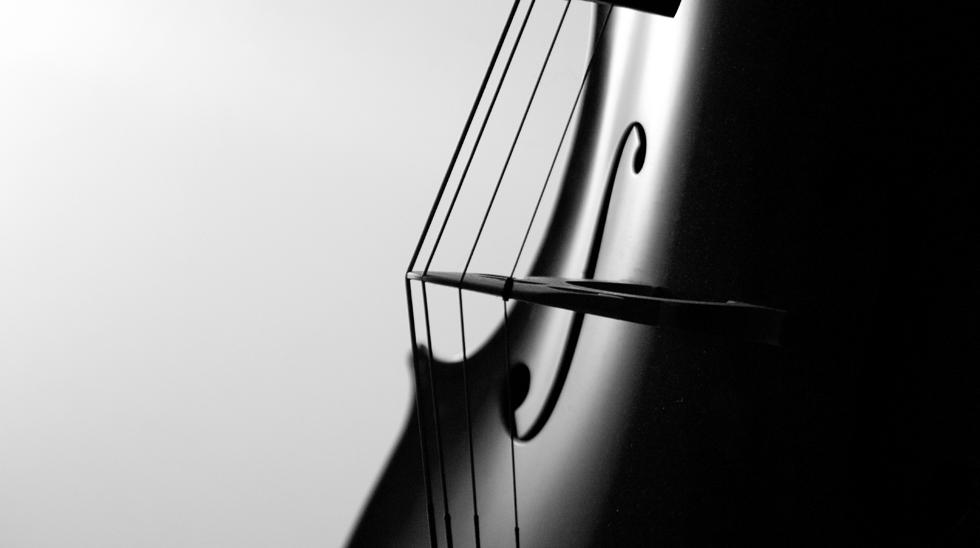
Ohio
Washington, D.C.
Texas
Pennsylvania
Orange County
London Berlin
vorys.com

Marc Moskovitz maintains a varied career as both a professional cellist and author In addition to serving as principal cellist of the ProMusica Chamber Orchestra, he performs regularly with the North Carolina Symphony . Marc has performed and toured with Boston’s Handel and Haydn Society and The Boston Pops, played at the Library of Congress, where he gave the North American premiere of Zemlinsky’s rediscovered Cello Sonata, and has performed as a guest of the Piatti Festival in Bergamo, Italy His recordings include the music of cello virtuosi David Popper and Alfredo Piatti, both on the VAI label, and premiere recordings of music of Franz Reizenstein and Eric Zeisl (ASV) . Marc holds a doctorate and master’s degree from Indiana University and was a Fulbright scholar
An award-winning author, Marc’s books include Beethoven’s Cello and MEASURE: In Pursuit of Musical Time, which traces the history of musical timekeeping He has written program notes for orchestras and opera houses on several continents and is a contributor to The New Grove Dictionary of Music and Musicians . The Eyes of Bach, a work of historical fiction about the death of J S Bach, was published in the fall of 2024



Katherine McLin concertmaster, 26 years
The Michael Jones & Jody Croley Jones Chair Current Residence: Phoenix, AZ


Rebecca Willie assistant concertmaster, 11 years
The Kathryn D Sullivan Chair Current Residence: Greensboro, NC

Amy Cave violin, 11 years
The Randy & Marilyn Miller Chair Current Residence: Cleveland, OH
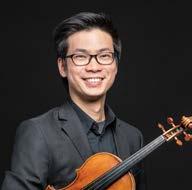
Solomon Liang violin, 7 years
The Laurie & Thomas W Hill Chair Current Residence: Columbus, OH
ProMusica is a collective of world-class musicians performing at the highest level who have chosen to make their musical home in Columbus. Learn more about our musicians online at www.promusicacolumbus.org.

Kirstin Greenlaw + violin, 1st year Current Residence: Cincinnati, OH

William Manley violin, 20 years
The Fran Luckoff Chair Current Residence: Columbus, OH
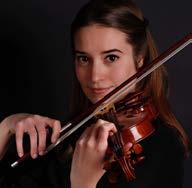
Téa Prokes + violin, 1st year
The Deborah Raita Chair Current Residence: Columbus, OH

Jennifer Ross principal second, 8 years
The Brachman Smith Family Chair Current Residence: Jackson, WY

Eric Kline violin, 14 years
The Jim & Ida Copenhaver Ginter Chair Current Residence: Pickerington, OH

Victoria Moreira violin, 11 years
The Dyann & E Joel Wesp Chair Current Residence: Chicago, IL

Koko Watanabe violin, 8 years
The Sallie J Sherman Chair Current Residence: Columbus, OH
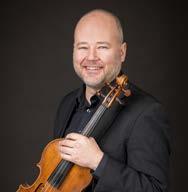
Elias Goldstein viola, 2 years
The Amy Thompson & Stephen Fechtor Chair
Current Residence: Landenberg, PA

Marc Moskovitz principal cello, 31 years
The Barbara Trueman Chair
Current Residence: Durham, NC

John Pellegrino
principal double bass, 14 years
The John F Brownley Chair
Current Residence: Columbus, OH

Donna Conaty principal oboe, 36 years
The Lee Shackelford Chair
Current Residence: Santa Cruz, CA

Mary Harris viola, 30 years
The Margaret & Jerome Cunningham Chair
Current Residence: Oxford, OH

Cora Kuyvenhoven cello, 25 years
The Bob & Mary Frances Restrepo Chair
Current Residence: Columbus, OH

Boris Astafiev + bass, 2 years
Current Residence: Cincinnati, OH

Jessica Smithorn oboe, 7 years
The Artie & Alisa Isaac Chair
Current Residence: Chattanooga, TN
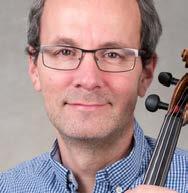
David Rose + viola, 1st year
The Keith F & Katherine B Dufrane Trust Chair
Current Residence: Fredonia, NY

Nat Chaitkin cello, 18 years
The William K Laidlaw Trust Chair
Current Residence: Cincinnati, OH

Nadine Hur principal flute, 5 years
The Dana Navin Schultz Chair
Current Residence: St Louis, MO
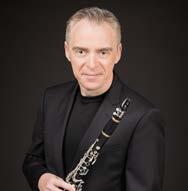
Ilya Shterenberg principal clarinet, 8 years
The Beth Grimes-Flood & Tom Flood Chair
Current Residence: Bangor, ME

Michael Isaac Strauss viola, 10 years
The Anne Powell Riley Chair Current Residence: San Diego, CA
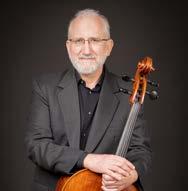
Joel Becktell cello, 17 years
The Donna K Laidlaw Chair
Current Residence: Albuquerque, NM

Anthony Trionfo flute, 5 years
The Miriam & Bernard Yenkin Chair Current Residence: New York, NY
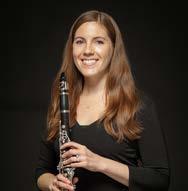
The

Ellen Connors principal bassoon, 15 years
The ML Chair
Current Residence: St Louis, MO
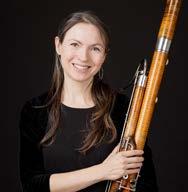
Rachael Young bassoon, 10 years
The Carolyn Merry & Bob Redfield Chair
Current Residence: Cincinnati, OH
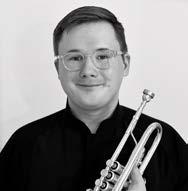
Justin Kohan principal trumpet, 2 years
The Susan L Quintenz Chair
Current Residence: Pittsburgh, PA
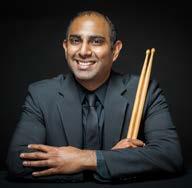
Rajesh Prasad percussion, 12 years
The Bob Redfield & Mary Yerina Chair
Current Residence: Raleigh, NC
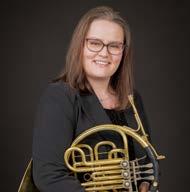
Stephanie Blaha principal horn, 8 years
The Todd S Swatsler Chair
Current Residence: Wadsworth, OH

Timothy Leasure trumpet, 22 years
The Zunkiewicz Family Chair Current Residence: Pickerington, OH
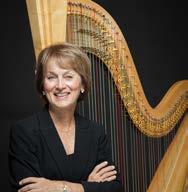
Jeanne Norton principal harp, 46 years
The Sustaining Board Chair
Current Residence: Columbus, OH

+ one-year appointment

Matthew Oliphant + horn, 3 years
The Burkey Family Chair Current Residence: Chicago, IL

Renee Keller principal timpani and percussion, 12 years
The Susan C Johnson Chair
Current Residence: Gahanna, OH

Aya Hamada principal harpsichord/keyboard, 21 years
The ProMusica Board Chair in memory of Ida Copenhaver
Current Residence: New York, NY
ProMusica Chamber Orchestra is grateful to the following donors who support our efforts to deliver a world-class and unique classical music experience. We invite you to join our circle of supporters online at promusicacolumbus.org, or by calling ProMusica’s Development Office at 614.464.0066 ext. 104.
$10,000 AND ABOVE
Gifts from Individuals
Deborah Anderson
Lavea Brachman and Andrew O. Smith
The Michael and Paige Crane Fund of The Columbus Foundation
Margaret Cunningham
Nancy and Steve Falk
Jim Ginter
Joan Herbers
Michael Jones and Jody Croley Jones
Helen Liebman and Thomas Battenberg
Dr. William Mitchell
Kathryn Sullivan
Todd Swatsler
Amy Thompson and Stephen Fechtor
Barbara Trueman
Miriam and Bernie Yenkin
Mary Yerina and Bob Redfield
Anonymous
Support from Corporations, Foundations & Public Agency Funds
American Electric Power
Bank of America
Kenneth L. Coe and Jack Barrow Fund of The Columbus Foundation
The Columbus Foundation
The CORE Group of UBS Financial Services
The Crane Family Foundation
DGD Group, Inc.
The Fox Foundation
Greater Columbus Arts Council
Ingram-White Castle Foundation
Nationwide
Ohio Arts Council
PNC
ProMusica Chamber Orchestra
Sustaining Board
The Reinberger Foundation
The Shackelford Family Fund of The Columbus Foundation
The Siemer Family Foundation
$5,000 - $9,999
Gifts from Individuals
George Barrett and Deborah Neimeth Fund of The Columbus Foundation
John F. Brownley
Dr. Richard and Yvonne Heather Burry
Keith Dufrane
Betsy and Jack Farrar
Beth Grimes-Flood and Tom Flood
Susan C. Johnson
The Kridler Family Fund of The Columbus Foundation
Donna Laidlaw
The Mary and Robert Lazarus Fund of The Columbus Foundation
Elliott S. Luckoff
The Fran Luckoff Family Fund of The Columbus Foundation
Malloure Family Foundation
Nancy Marzella
The Quintenz Family
Mary Frances and Bob Restrepo
Anne Powell Riley
David R. Schooler
Hugh Schultz
Caitlin Sherman and Vineeth Sukrithan
Kara Trott and Bob Philips
The Zunkiewicz Family
Anonymous
SPECIAL GIFTS
In Memory of Pamela Romeo Elliott
James Elliott
In Memory of Allene N. Gilman
The Allene N. Gilman Charitable Trust
In Memory of Frances N. Lazarus
Peggy Lazarus
Support from Corporations & Foundations
BakerHostetler
E. Nakamichi Foundation
Ice Miller LLP
Jones Day
The Hattie and Robert Lazarus Fund of The Columbus Foundation
Porter, Wright, Morris & Arthur LLP
Vorys, Sater, Seymour and Pease LLP
SYMPHONY
$3,000 - $4,999
Gifts from Individuals
Lauren Bonfield and Stephen Keyes
Mary and Steve Burkey
Lynn Elliott
Dr. Dara A. and Mark H. Gillis
Laurie and Thomas Hill
Artie and Alisa Isaac – Yellow Springs Community Foundation
Marilyn and Randy Miller
Deborah Raita
Sallie J. Sherman
Jayne Wenner and Peter Costanza
Dyann and Joel Wesp
Becky Wright
Anonymous
Support from Corporations & Public Agency Funds
Cardinal Health
City of Columbus
Kegler, Brown, Hill + Ritter
Ologie
CONCERTO
$2,000 -$2,999
Gifts from Individuals
Robert Allen and Diane Weaver
Catherine and John Brody
Liz Bundy
Trish and John Cadwallader
Sylvia Fergus and Kent Rigsby
Linda and Bill Habig
Steven Hillyer
The Josenhans Family Fund of The Columbus Foundation
Suzanne Karpus
George Knight and Ellen Berndt
Susan and Barry Lubow
Margaret A. Malone
Mary Pat Martin and Rick Livingston
Ann and Doug Teske
Anonymous
SPECIAL GIFTS
In Honor of Chris Bruner
Mary Rutherford
RHAPSODY
$1,000 - $1,999
Gifts from Individuals
Julia and Milt Baughman
Sally and Roger Baughman
Pamela and John Beeler
Evelyn Behm
Katherine Borst Jones
Ellen Bowden
David Chan and Annjia Hsu
Bob and Julie Connors
Mary Jo Conte
Mark and Mindy Corna
Patt and Chuck DeRousie
Charles and Edith Emery
Ann and Jack Fowble
Jack and Joan George
Katie and Jake Gibson
Barbara and Gary Giller
Michael Gladman
David Hedgecoth
Mark and Mary Howard
Benita Kahn
Gerald and Ann Newsom
Annegreth T. Nill and Bruce C. Posey
Angela and John Petro
Julie and Bob Rutter
William and Patricia Sadataki
Kelly and Peyman Salehi
Stacie and Mark Sholl
Lydia Smith-Lockwood and Tim Lockwood
Ed and Nancy Strause Fund at The Columbus Foundation
The Oscar L. and Rita C. Thomas Fund of The Columbus Foundation
Nancy and Raymond Traub
Pam Hussen and Patrick Vincent
Adam Wagenbach and Kathleen Murphy
Gail Walter and Allen Proctor
Lillian Webb
Robert F. Wing
John and Sherry Young Anonymous
SPECIAL GIFTS
In Honor of Lavea Brachman
Judith and Merom Brachman
In Memory of George Corey
Georgeann Corey
In Honor of Katie McLin
Diane McLin
SONATA
$500 - $999
Gifts from Individuals
George and Vanessa Arnold
Paul and Tere Beck
Lisa Becker
Ronald Bell
Robert Byrd
David and Susan Carr
Patricia Cash Isaacson
Cindy and John Deliman
Lindsey and Kevin Dunleavy
Cornelia Ferguson
Bebe and John Finn
Mabel Freeman
Jerome Friedman
Brian Fruchey
Pat and Darla Garavito
Patricia Hadler
Joshua and Brandy Hill
Rose Hume and Jim Dunn
Ann and James A. Jones
Debby and Ira Kane
Deborah and Douglas King
Syd and Debora Lifshin
Warren and Dai-Wei Lo
Susan C. Meiling
Christine and Kirk Merritt
Larry and Peg Neal
Mariko Kaneda-Niwa and David A. Niwa
The Noyes-Krippendorf Fund of The Columbus Foundation
Mary and Charles Oellerman
Sue Porter and Mike Sayre
Nathan Riley
Cordelia Robinson
Patrick Ross
Paulette Schmidt
Lenore Schottenstein
Carl and Connie Smallwood
Kitty and Jim Soldano
Judi and James Stillwell
Charles and Betsy Warner
Leslie Yenkin and Jonathan Petuchowski
$250 - $499
Gifts from Individuals
Jane and Stan Ackley
Valerie Barth
Stephen Bigley and Rebecca Roeder
Connie Bodiker
Jodi Bopp
Greg Bryan
Michael Burton
Earl Busenburg
Alan and Linda Carter
Stephanie and Nelson Cary
Todd Clark
Carol Hershey Durrel
Laura and Pat Ecklar
Michelle Gubola and Lee Fredette
Ruth Guzner
Vincent and Gayle Herried
Charlie and Linda Kurtz
Barbara and David Lambert
Dr. and Mrs. Douglas Levin
Yung-Chen & Katherine Lu
Robert and Jennifer Lane Maier
Mike McGovern and Susan Hart
Mark L. Miller
Dan and Kathy Moore
Karen and Neil Moss
Elizabeth and Kulu Moyo
Brad Myers and Steve Rowlands
Jane Mykrantz
Robert Palmer and Susan Simms
Cynthia Pfening
Joe and Cortney Pickens
Harry and Sue Pukay-Martin
Subha Raman and Kumar Patel
Maureen and Bill Severns
Marcia Katz Slotnick
Ronald L. Smith and Family
Tom and Susan Szykowny
Hamilton and Margaret Teaford
Ronald and Ramona Whisler
Ruth Whitehouse
Kim and Matt Young
Anonymous
PRELUDE
$100 - $249
Gifts from Individuals
Mary Ann and Michael Abrams
Dr. Miebi and Mrs. Jacqueline Akah
Susan Altan
Matthew Ando
Randy Applegate
Diane and Ted Armbruster
Tim and Julia Armstrong
Peter Auzers
Michael Benedict
Frank and Maureen Bittel
Will and Elizabeth Blind
Ann Brace
Susan Brown
Donna Cavell
Carol Chaitkin
Peter Coccia
Karen and David Cohn
Robert Colby
Dan and Christie Crane
Joanne and Russell Crouse
Mike and Susan Davala
Karen Davis
Betsy and Nick DeFusco
Cindy and John Deliman
Patrick Doss
Erik Edwards
Toba Feldman
Judy and Ted Fisher
Gary Flach
Benjamin J. and Emily M. Fuller
Carole and Nelson Genshaft
David and Patricia Gold
Mike and Harriet Hadra
Anne and Wesley Harnish
Brian Houts
David Humeston and Amy Popp
David Jeggle
Ann Joyce
Lawrence and Jane Keller
Joel and Gerry Kent
Gale and Steve Klayman
Eric Kline
Arnold and Carol Klukas
Sharon Kokot
Katie Kuvin
Anne LaPidus
Michael La Roe
Jill Levy
Barry Liss
Timothy and Barbara Lloyd
Philip Lortz
Michael Loukas
Angus McKay
Judy Michaelson
John and Sandra Moore
Thomas and Suzanne Moushey
The Nekvasil Charitable Fund
David and Dorothy Pritchard
Sandra and Howard Pritz
Ginny and Reinhold Roedig
William L. Slutz and Linda A. Roomann
Sharon Sachs and Donn Vickers
Jonathan Sauer
Lyle Saylor
Gary and Ellen Schwarzmueller
Patti Shorr
The Smajlovic Family
Marilyn R. Smith
Molly and Brian Snell
Deb Tongren
Barbara and James Tudas
Robin Vachon-Kraut
Adrianne Vickers
Sharon Walton
James and Rosanne Weidaw
Chuck White
Margie and Thomas Williams
Michael Young and Sandra Wolf
Barb Wooldridge
Sarah Ziegler
This list includes contributions made to ProMusica for the period of July 1, 2024 to June 30, 2025. Every effort has been made to ensure accuracy. However, in listings of this length, errors and omissions may occur. If your name has been omitted, or listed incorrectly, we sincerely apologize. Please let us know so that we may correct our records and this listing.
Thank you.
Gifts contributed to the ProMusica Endowment Fund provide a lasting financial foundation for the future of our orchestra. ProMusica Chamber Orchestra deeply appreciates the following gifts received during the 2024-2025 giving year (July 1, 2024 – June 30, 2025).
In Honor of John Behal
DeeDee Glimcher
In Honor of Isidore Burry
Deborah Stype
In Honor of Richard W. Burry
Yvonne Burry and Family
In Honor of Janet Chen
Laurie and Thomas Hill
Susan and Ken Quintenz
In Memory of Ms. Hortie
Cummings
Alyssa Cummings
In Honor of Ellen Kay Douglas
Lee Paragas
In Honor of Barbara K. Fergus
Marilyn Harris
In Honor of Joan Herbers
Parkview Partners Capital
Management
In Memory of Susanne Jaffe
Victoria Jaffe
Susan and Ken Quintenz
In Memory of Jody Croley Jones
Tom Battenberg and Helen Liebman
Lin Bensen
Yvonne and Richard W . Burry
Elizabeth Kellogg
Konecny Family Fund
Emily and Francisco Martinez
Roca
Bill and Marybeth McDonald
Lee Shackelford
Mary Yerina and Bob Redfield
In Memory of Dr. Wayne Lawson
Julia and Milt Baughman
Sharon Cameron
Peggy Lazarus
In Honor of Jill Levy
Ann Joyce
In Memory of Elaine Lewin
Carrie and Andy Madison
In Honor of Ekaterina Malkin
Clara Kliman-Silver
In Memory of Lucy and Sam Porter
Samuel H . Porter, III
In Honor of Bob Redfield
Yvonne and Richard W . Burry
John Yerina
In Memory of Joseph Rodriguez
Bruce A Jensen
In Honor of Caitlin Sherman
Elaine Luttrull
In Memory of Gary Shildt
Christopher Lohr
In Honor of Chuck White
Tom Battenberg and Helen Liebman
In Honor of Mary Yerina
Lindsey and Kevin Dunleavy
For more information on making a perpetual gift to the ProMusica Endowment Fund, please contact the ProMusica Development Office at 614 464 0066 ext 104
ProMusica thanks the following who have generously donated an instrument or contributed to help fund our “Play Us Forward” outreach program. Support for “Play Us Forward” helps provide musical instruments, instruction, and enrichment activities to more than 100 middle-schoolers at no cost to students or their families.
If you wish to participate to ensure the program’s sustainability, please visit promusicacolumbus.org or contact 614.464.0066 for more information . Thank you for making musical opportunities possible for the youth in our community!
Contributions listed were received for the 2024-2025 school year .
Sabrina Bobrow
Robert Byrd
Georgeann Corey
Ellen George
Steven Hillyer
Deborah Raita
Nathan Riley
Mary Beth Shirk
In Honor of Barbara K. Fergus
Susan and Ken Quintenz
SUPPORT FROM CORPORATIONS & FOUNDATIONS:
American Electric Power Bank of America
Ingram-White Castle Foundation
The Hattie and Robert Lazarus Fund of The Columbus Foundation
Ohio Arts Council
ProMusica Sustaining Board
We thank the following corporations and individuals for their generous support of our 2025 Soirée Benefit and Concert.
PRESENTING SPONOR
The CORE Group of UBS Financial Services
GOLD SPONSORS
BakerHostetler
Lavea Brachman and Andrew
O . Smith
Mimi Dane
Jim Ginter
Joan Herbers
Ice Miller LLP
Jones Day
Ologie
Porter, Wright, Morris & Arthur LLP
Lee Shackelford
Vorys, Sater, Seymour and Pease LLP
The Westin Great Southern Columbus
SILVER SPONSORS
Janet Chen and Rick Buchanan
Crane Group
Kegler, Brown, Hill & Ritter
Christine and Meri Kullberg
PNC Bank
Caitlin Sherman and Vineeth Sukrithan
BRONZE SPONSORS
Doug and Monica Kridler
George Barrett
Julia Backoff and Chip Burke
Bank of America
Darci Congrove, Chris Hune, Patti Orzano, and Sally McDonald
Tom and Ann DiMarco
Bill and Wendy Faust
Ann and Tom Hoaglin
Irvin Public Relations
Suzanne Karpus
Mary and Tom Katzenmeyer
Steve Keyes and Lauren Bonfield
Nancy Marzella, Amy Spiess,
Brooke Stein, and Lily Stein
The Roe Family
Wells CPA
PLATINUM PATRONS
Barbara Brandt
John Brownley and Lynn Elliott
Michael Burton
Trish and John Cadwallader
Marilyn and Marty Campbell
Donna Cavell
Katie and Geoff Chatas
Mark and Mindy Corna
Patricia Cunningham
Dr Ellen and Dr Stephen Douglas
Jim Elliott and John Behal
Stephen Fechtor and Amy Thompson
Kelly Fuller and Bob Thomas
Kenneth Fultz
Courtney Gerlach and Stan Ferger
Barbara Goettler
Babette Gorman
The Grimm Family
Steven Hillyer
Michael E Jones and Jody Croley Jones
Keely Kurtas-Chapman
Mary Lazarus
Peggy Lazarus
Barry Liss
Jerry Maloney and Brenda Petruzzella
Susan and Bill McDonough
Amy Milbourne
Thom O’Reilly
Gina Olsen
Joe and Cortney Pickens
Susan and Ken Quintenz
Sue and Mark Real
Peyman and Kelly Salehi
Laurie Schmidt-Moats and Tim Moats
David Schooler
Lenore Schottenstein
Alex and Katelyn Stapleton
Todd Swatsler
Arlene and Michael Weiss
Linda Wilson and Family
Vivian Witkind Davis
Miriam and Bernie Yenkin
Mary Yerina and Bob Redfield
Sarah Ziegler
PATRONS
Susan Altan
Tom Battenberg and
Helen Liebman
Milt and Julia Baughman
Sally and Roger Baughman
Lynda Berge Disser
Rikki Burleson
Yvonne and Dick Burry
Christopher and Anne Cole
Jayne Wenner and Peter Costanza
Kim and Joe Dascenzo
Lindsey and Kevin Dunleavy
Laura and Pat Ecklar
Marilu and Tim Faber
Nancy and Steve Falk
Paul George
Chris and Victoria Giller
Marilyn Harris
Jason and Jennifer Hurley
Brad Myers and Steve Rowlands
Mary and Charlie Oellermann
Deborah Raita
The Romig Family
Rosanne and Mark Rosen
Chris and Kristen Rusen
Julie and Bob Rutter
Mark and Stacie Sholl
Angie Lloyd and Ric Simmons
Lydia Smith-Lockwood and Tim Lockwood
Beth and Tom Stafa
Sarah Townes
Cynthia M Whitacre
Katelyn Wright
Jarrod Wurm, Benjamin Buettner, and James Watson
Greg Zunkiewicz
Anonymous
Julia Backoff and Christopher
Burke
John Brownley and Lynn Elliott
Babette Gorman
IN-KIND DONATIONS
Rose Bredl Flowers & Gifts
RAFFLE PRIZE DONATIONS
American Electric Power
Chouette
Columbus Fury Donatos
Betsy and Jack Farrar
Jake Gibson
Grant Park Music Festival
Hank’s Low Country Seafood & Raw Bar
PNC Bank
Porter, Wright, Morris and Arthur LLP
ProMusica Chamber Orchestra
Board of Trustees
Bob Redfield and Mary Yerina
Lee Shackelford
Tiffany & Co , NYC
Together & Company
Vorys, Sater, Seymour and Pease LLP
Rachael Young
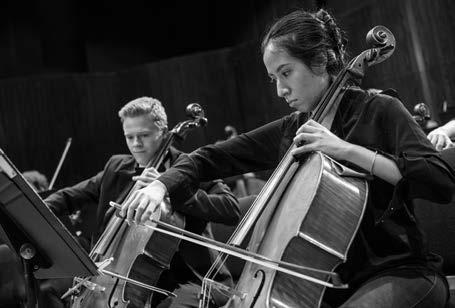



Porter Wright is proud to support ProMusica’s vision of spreading the joy of music to audiences—in order to engage, inspire and connect them to the world around us.
Congratulations on another successful season!
